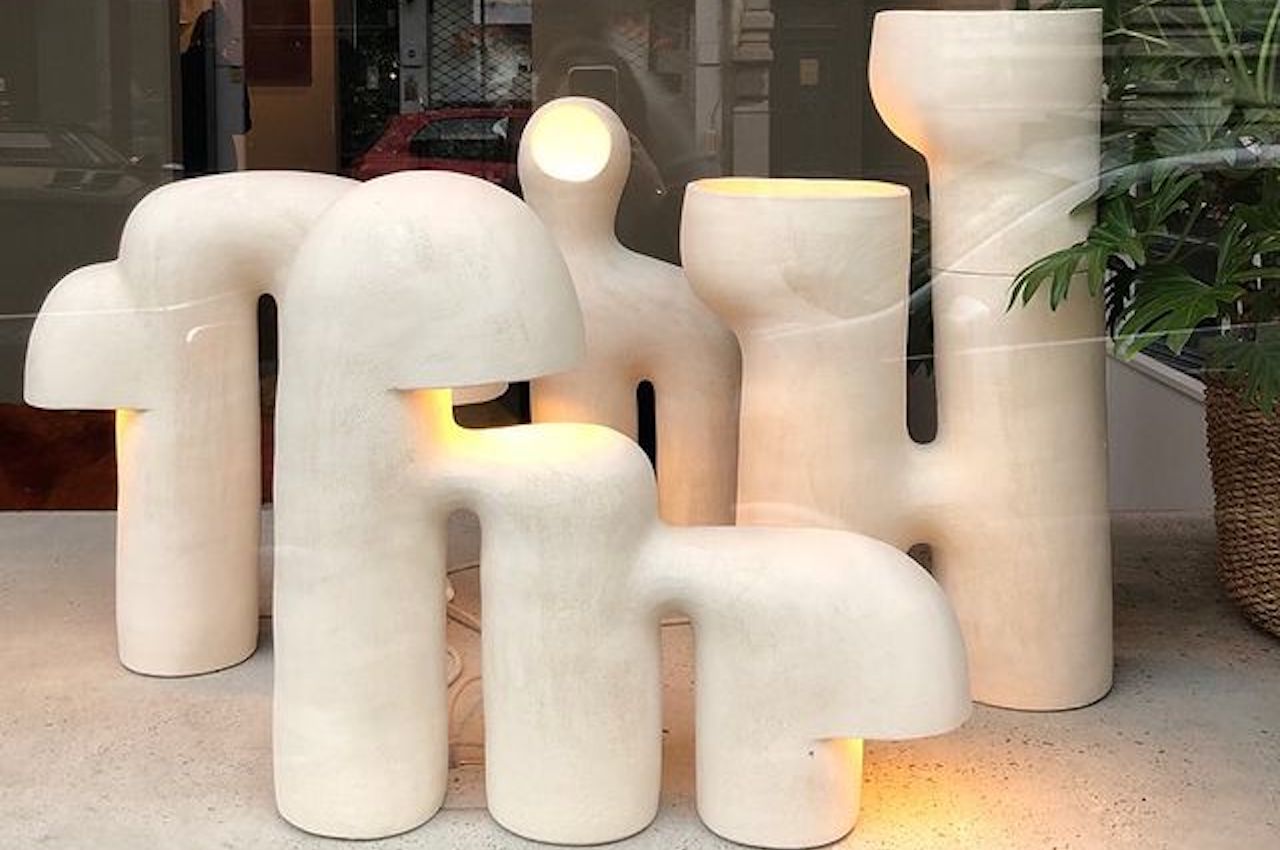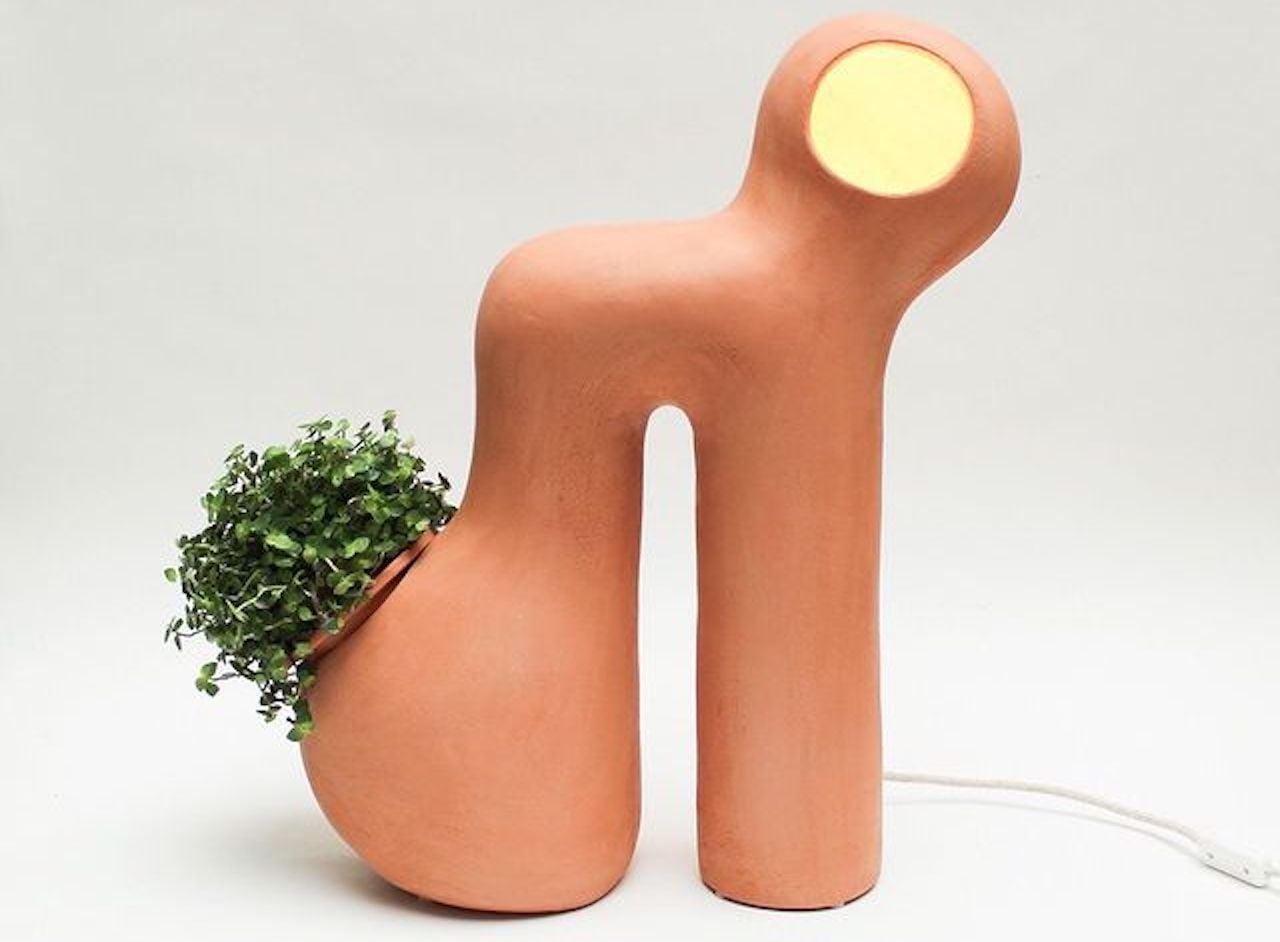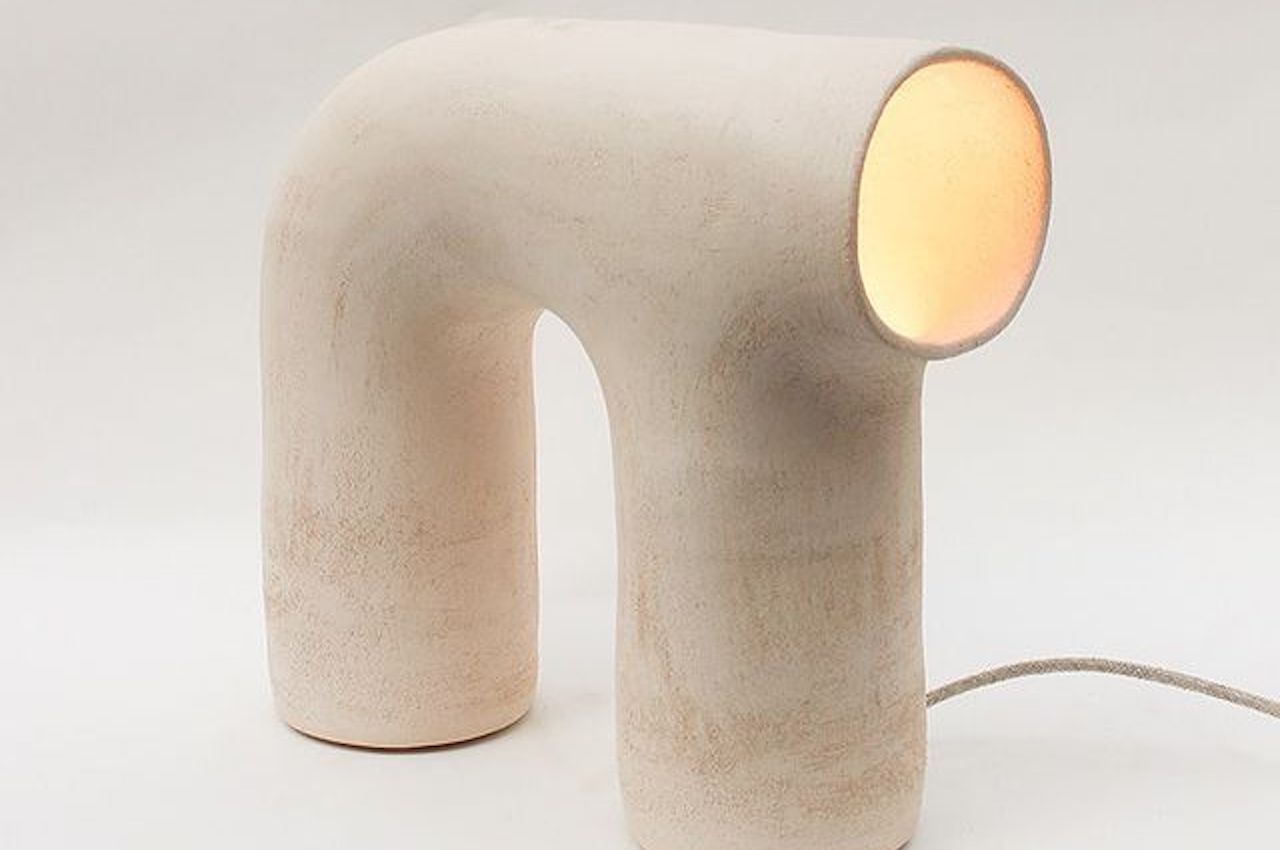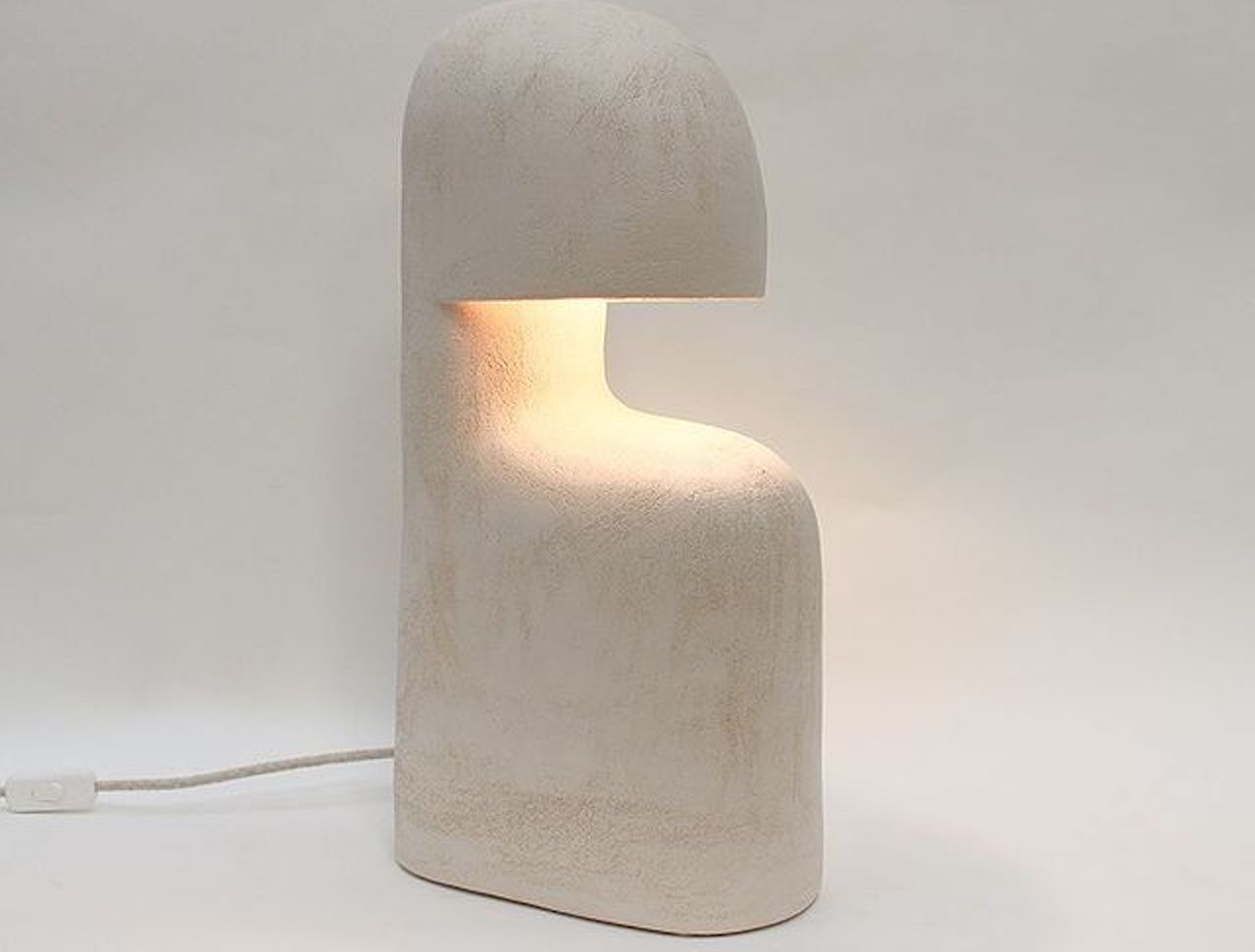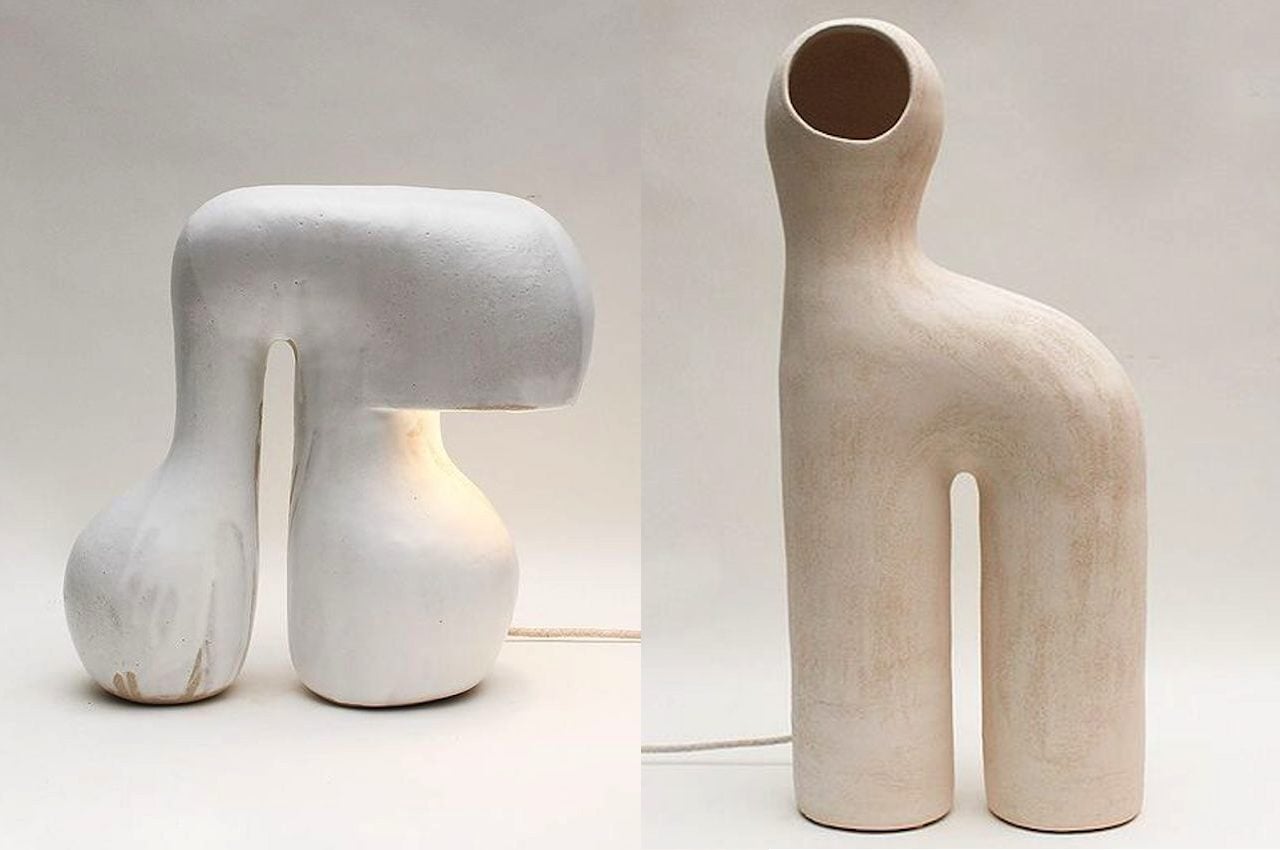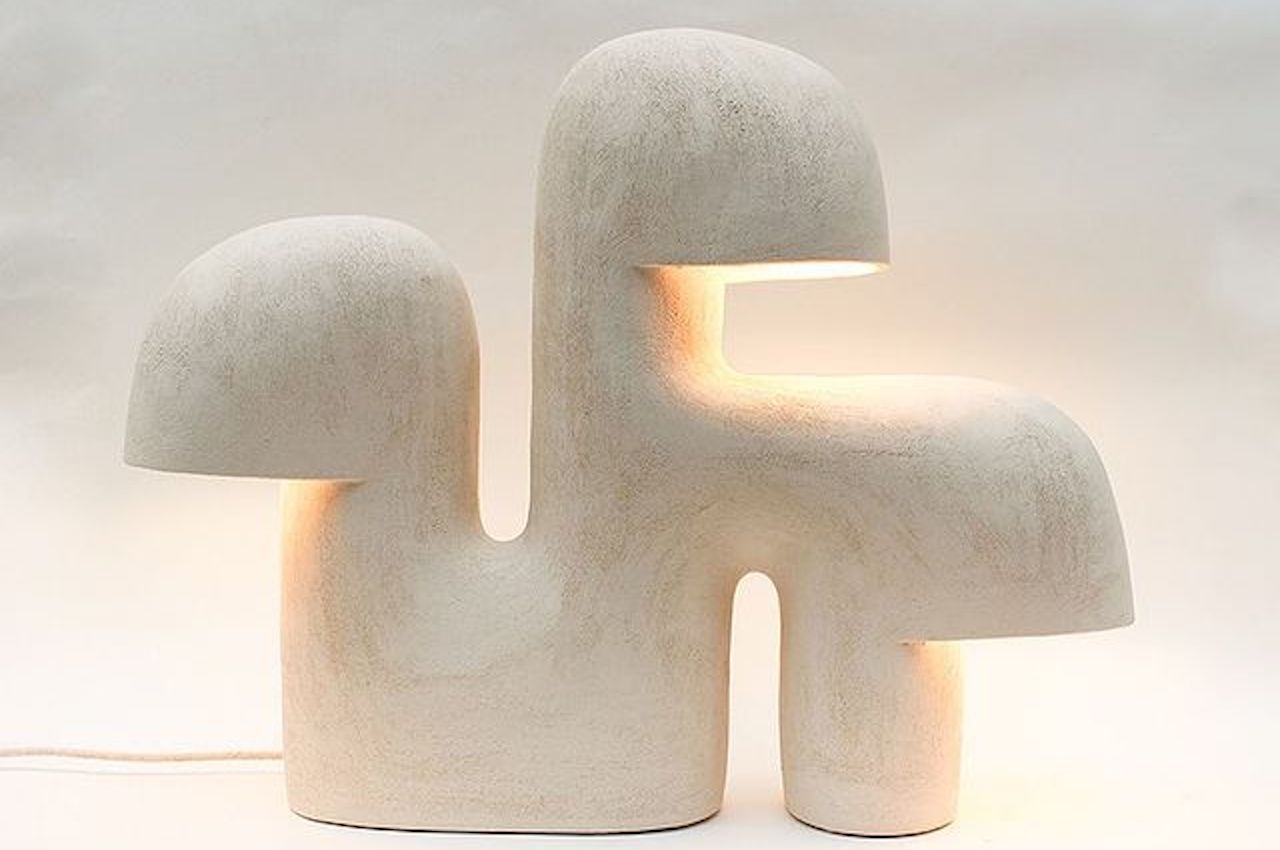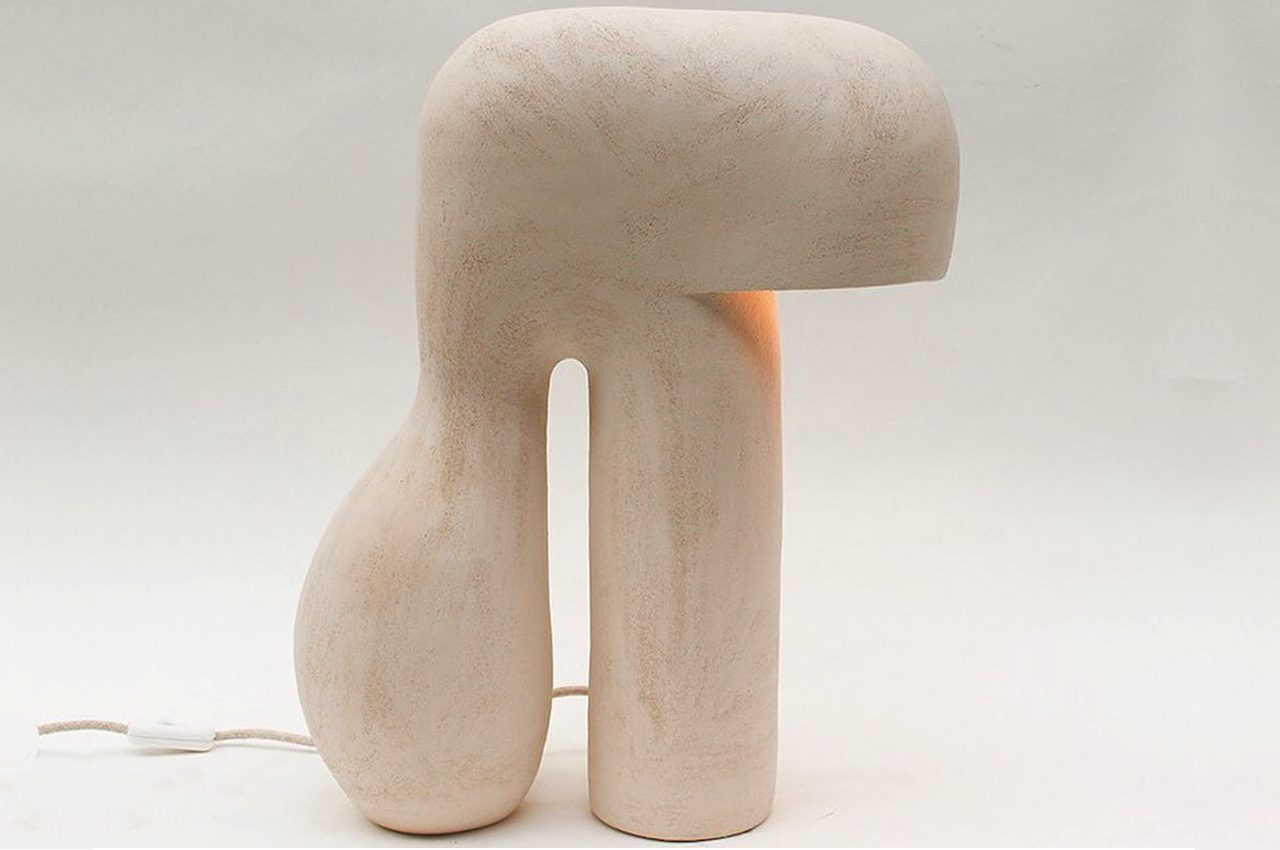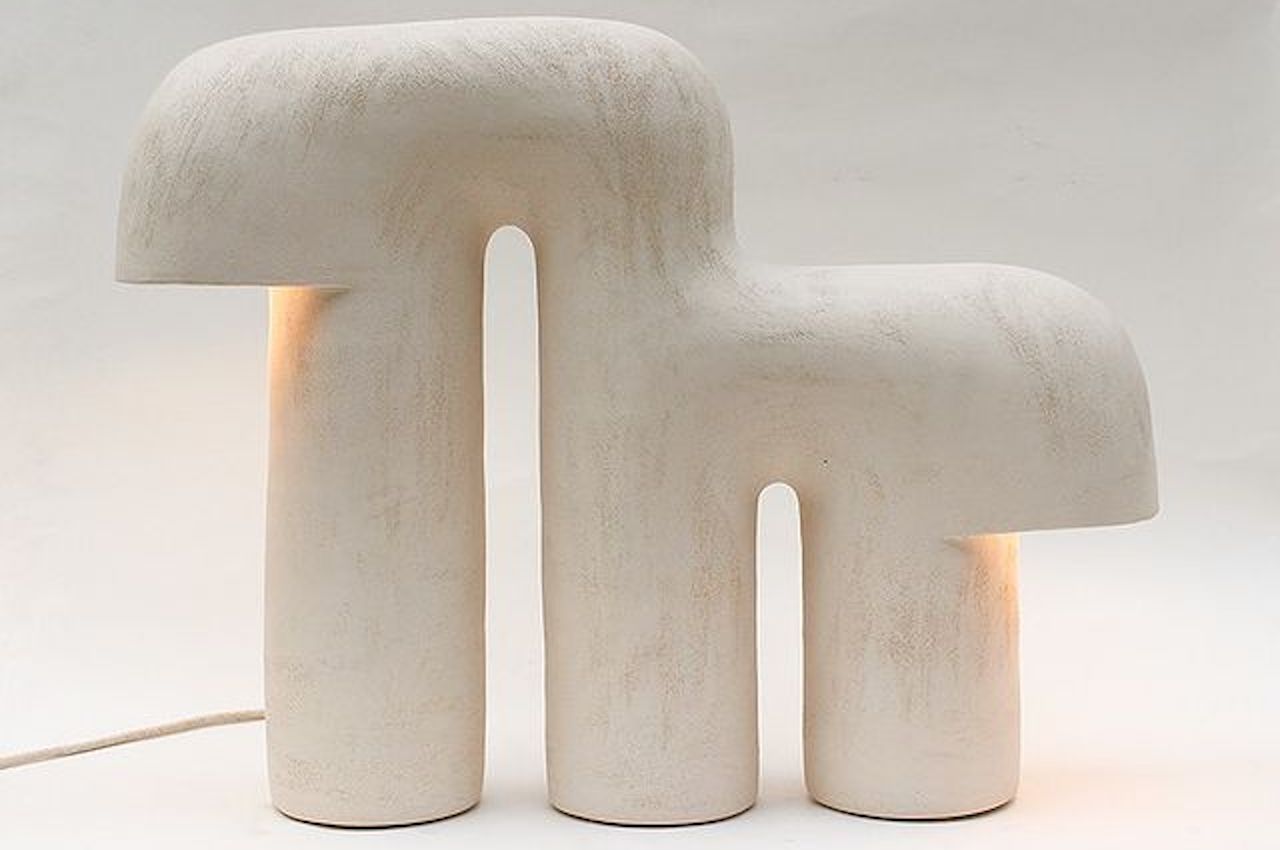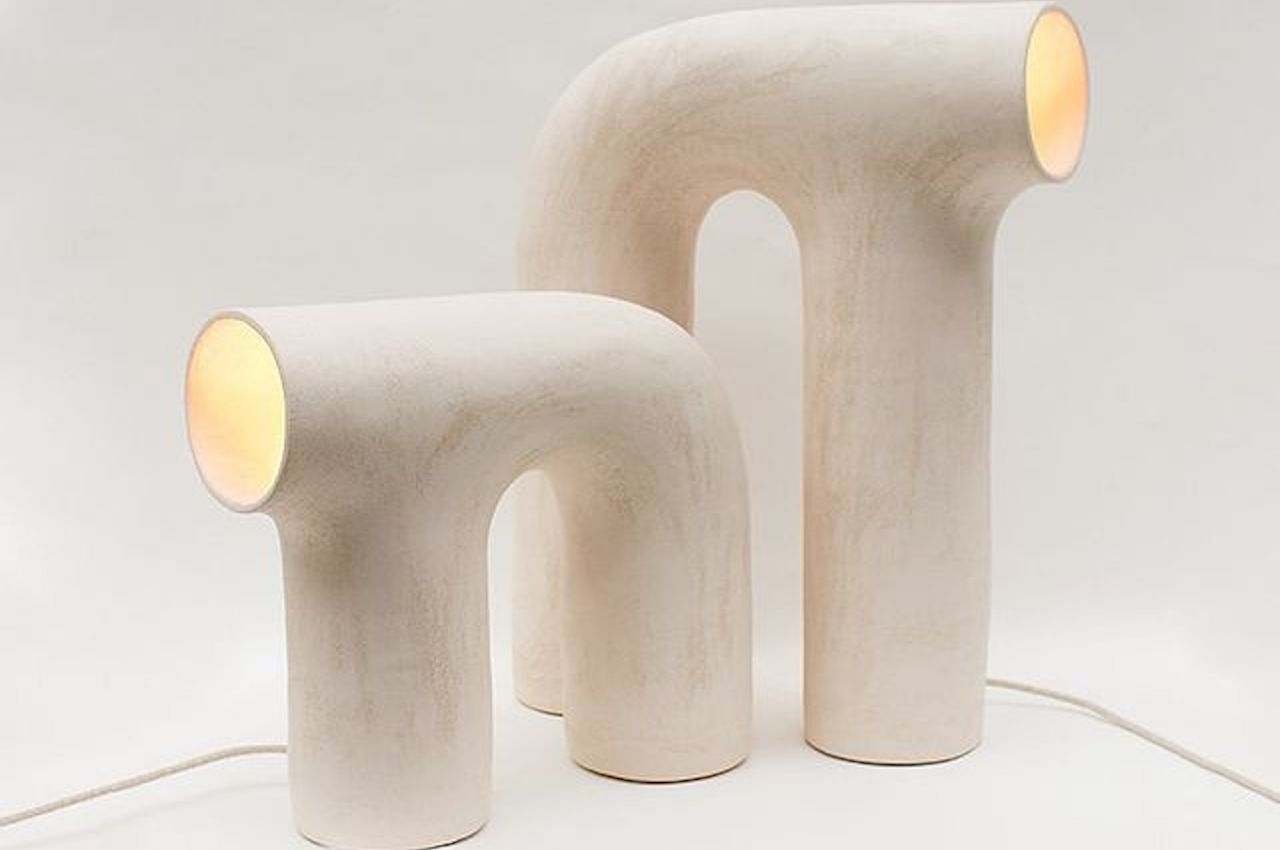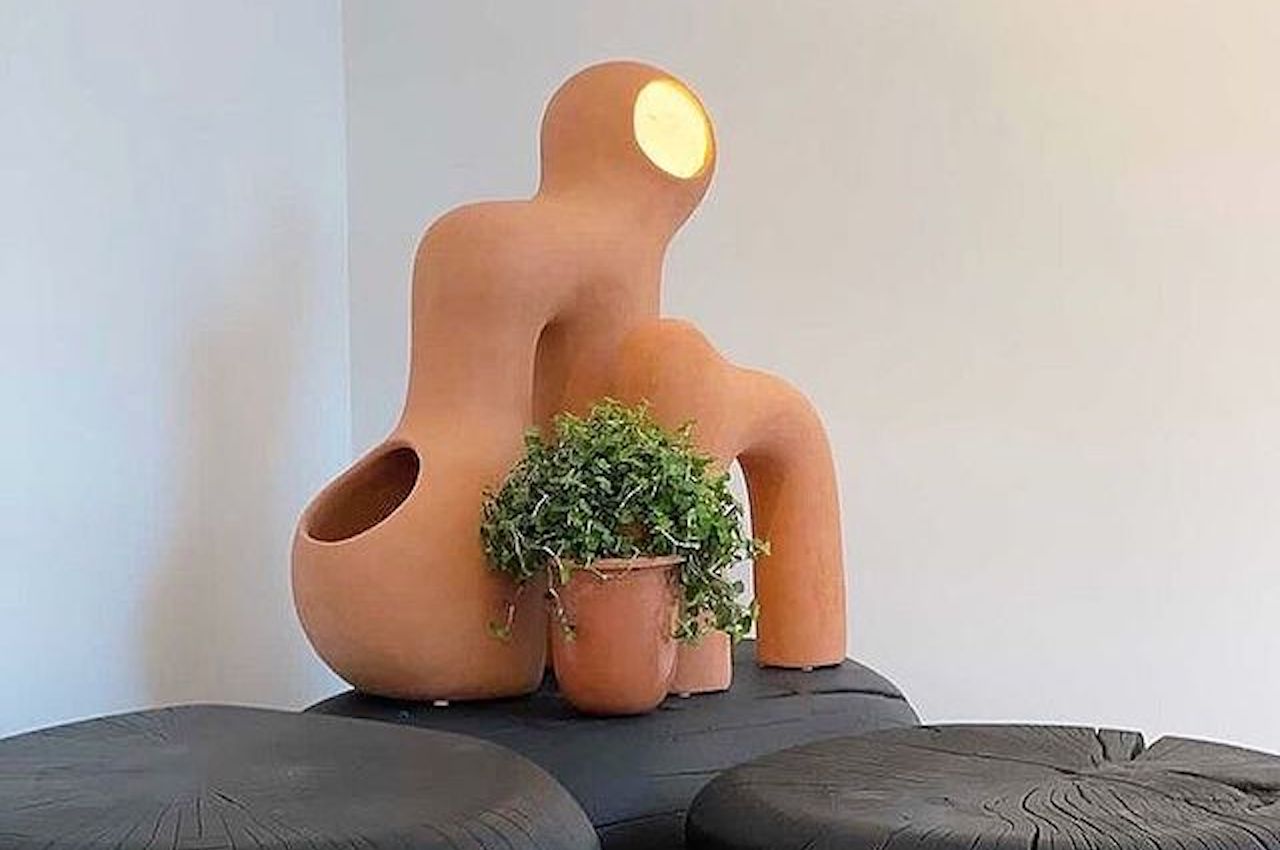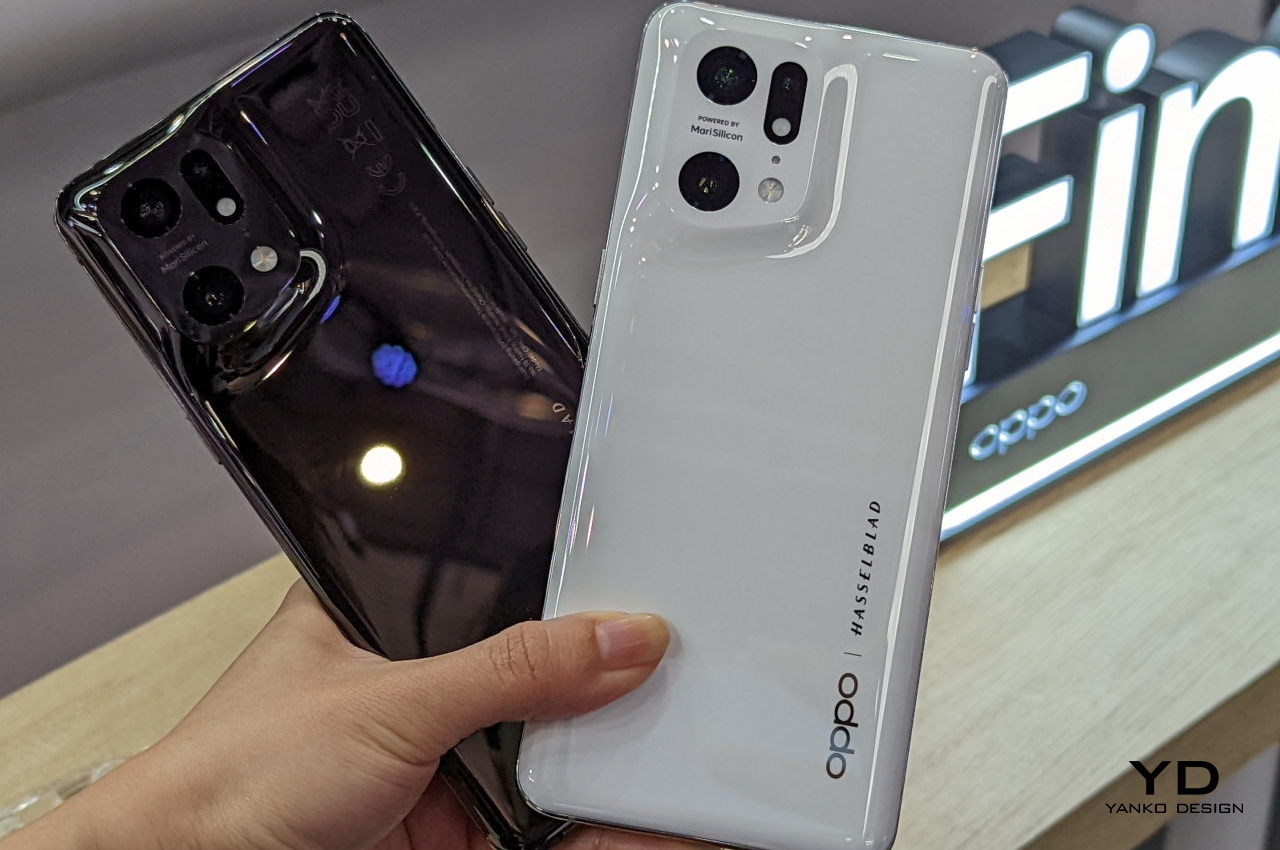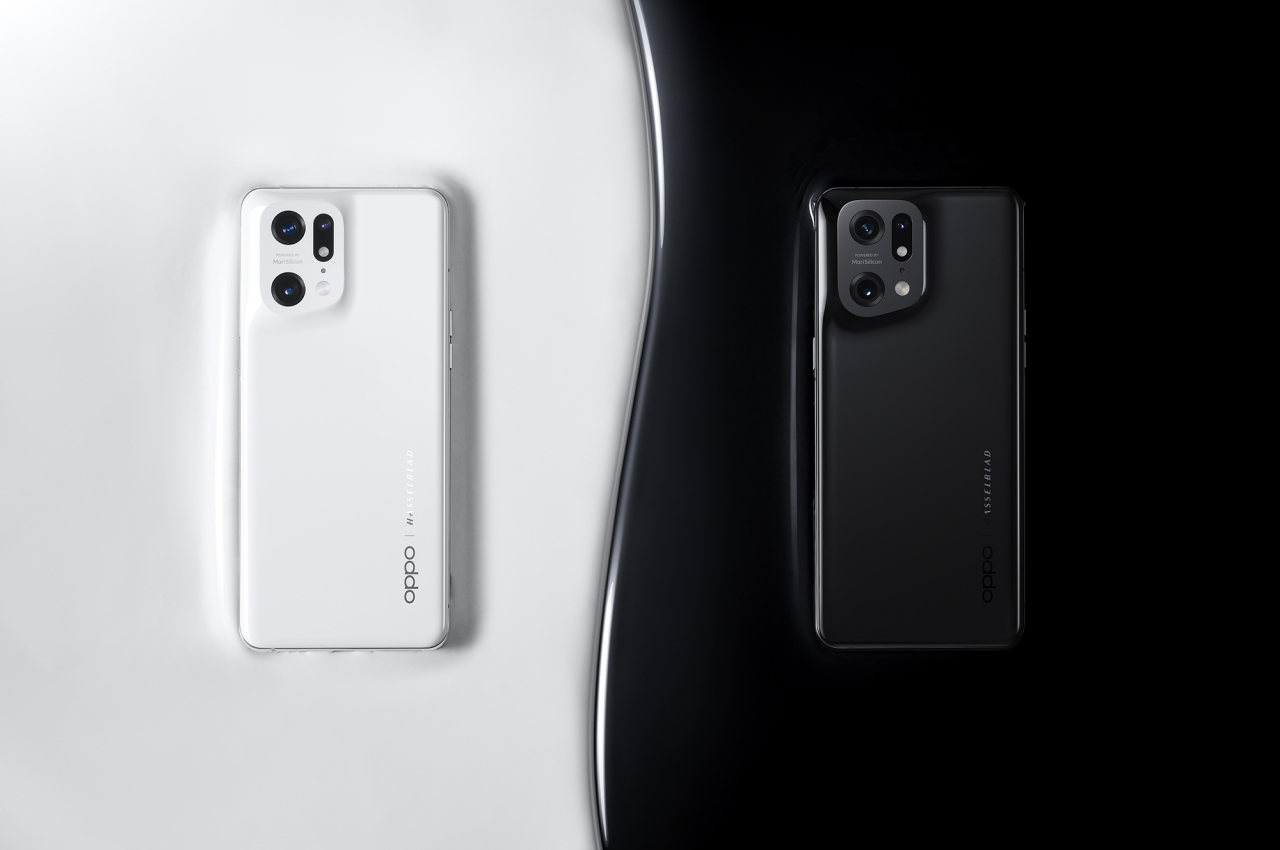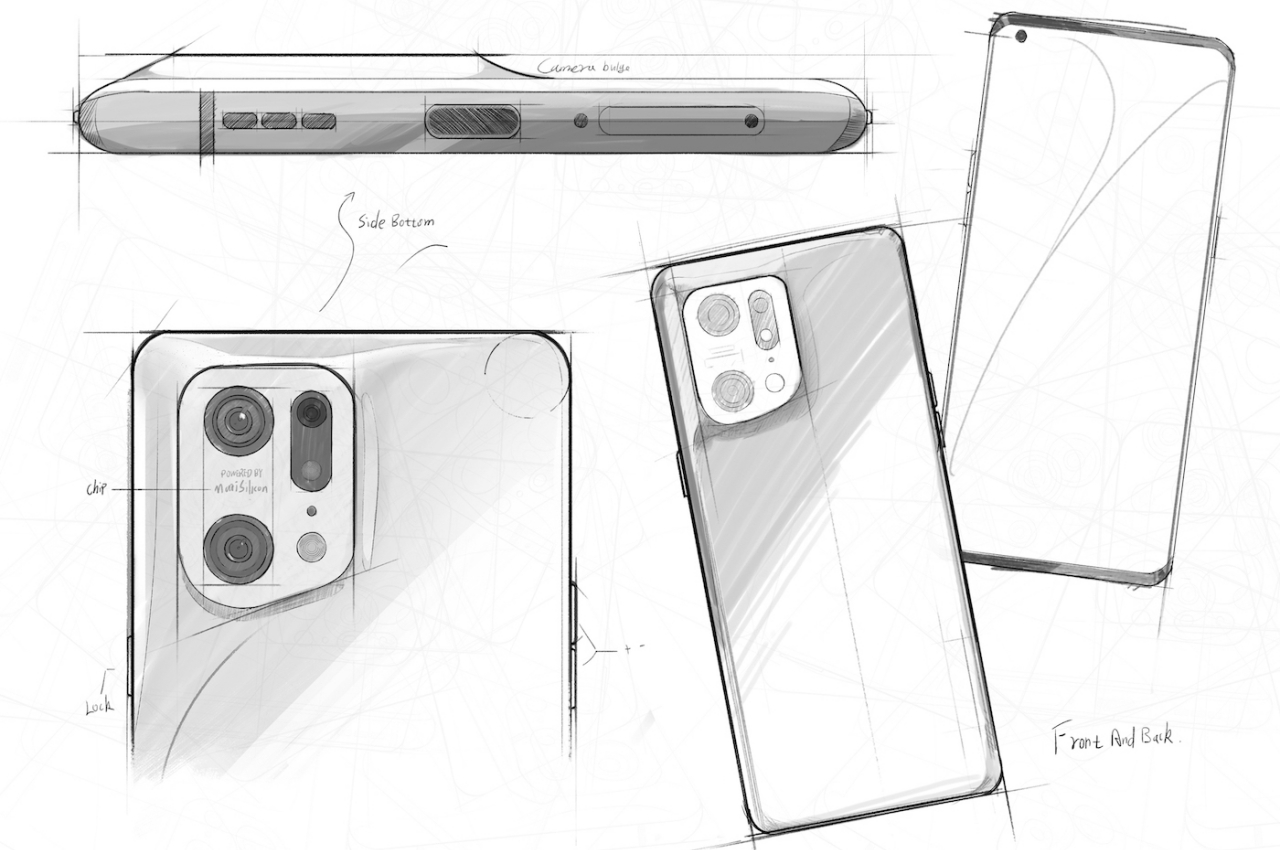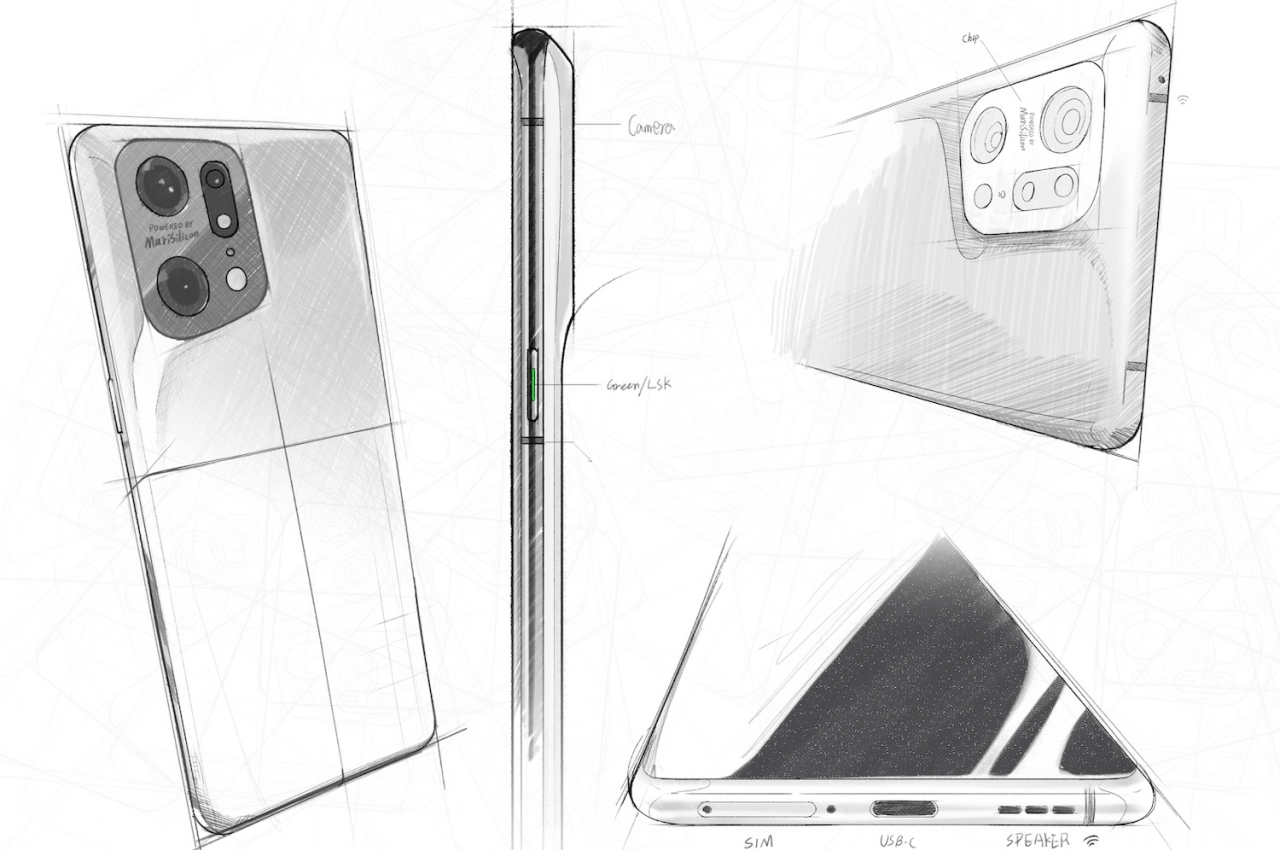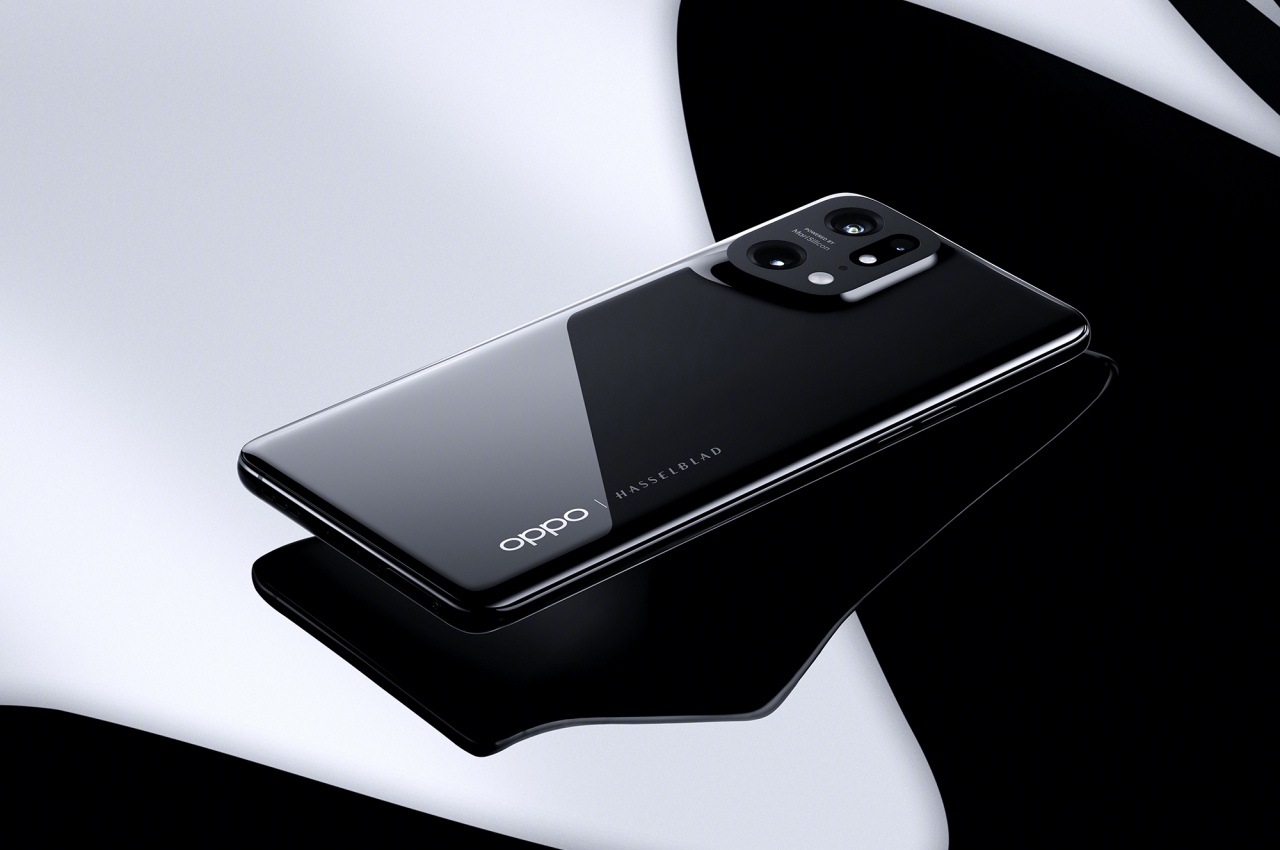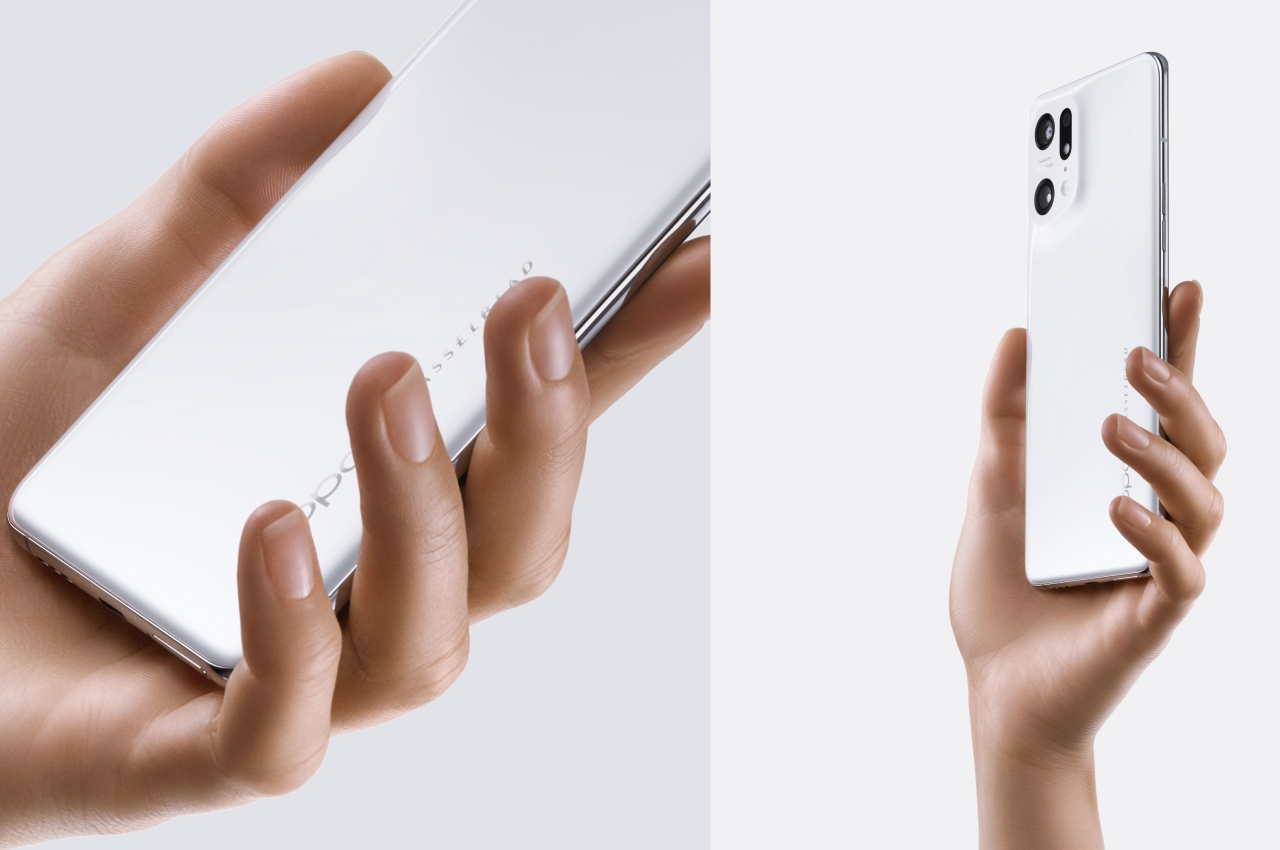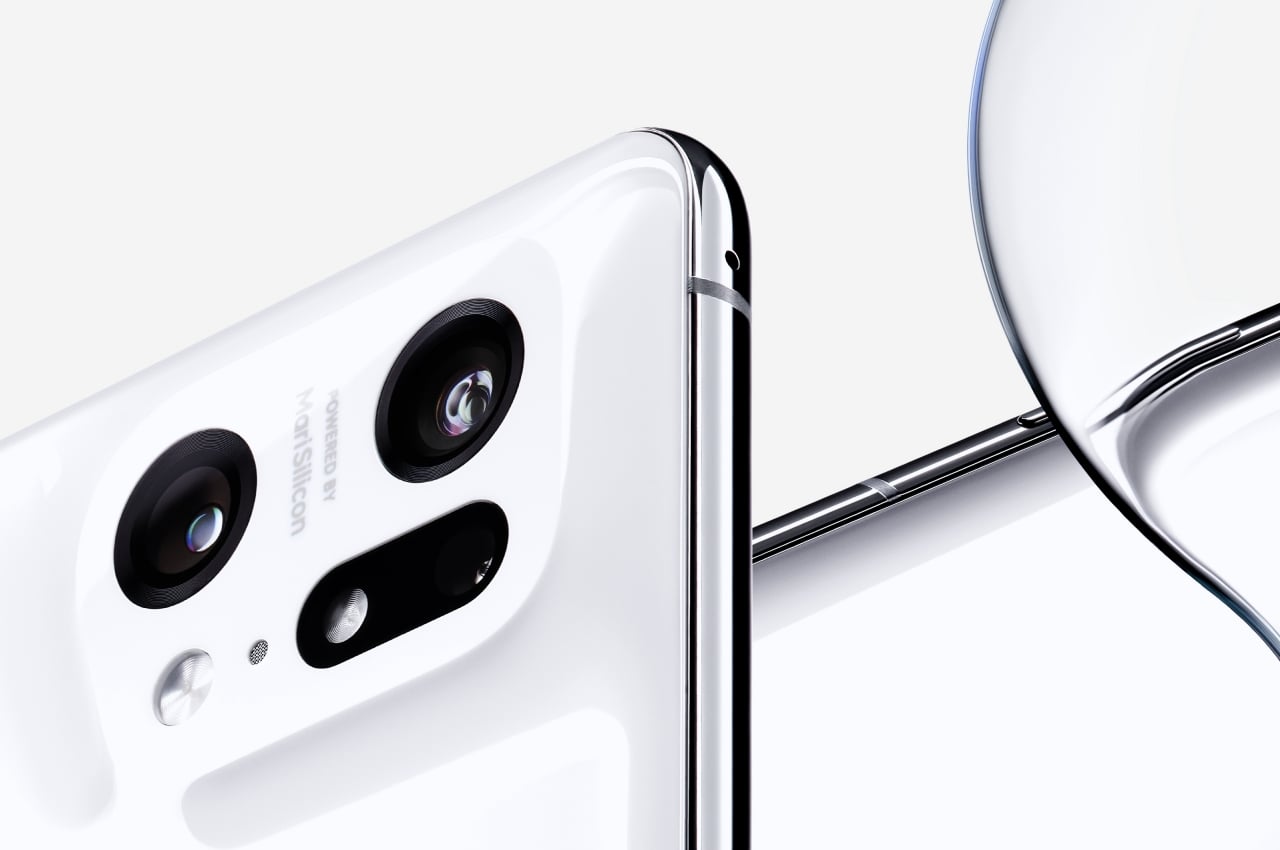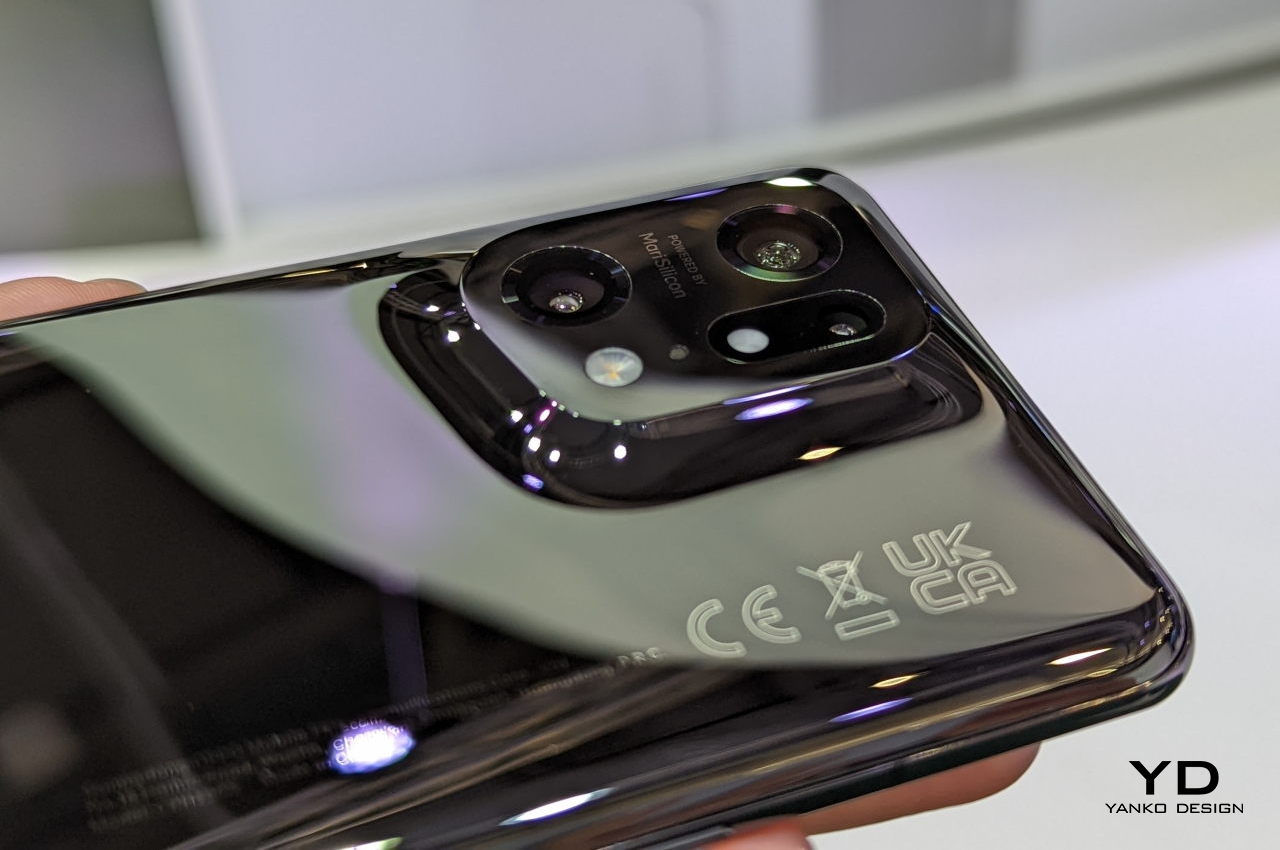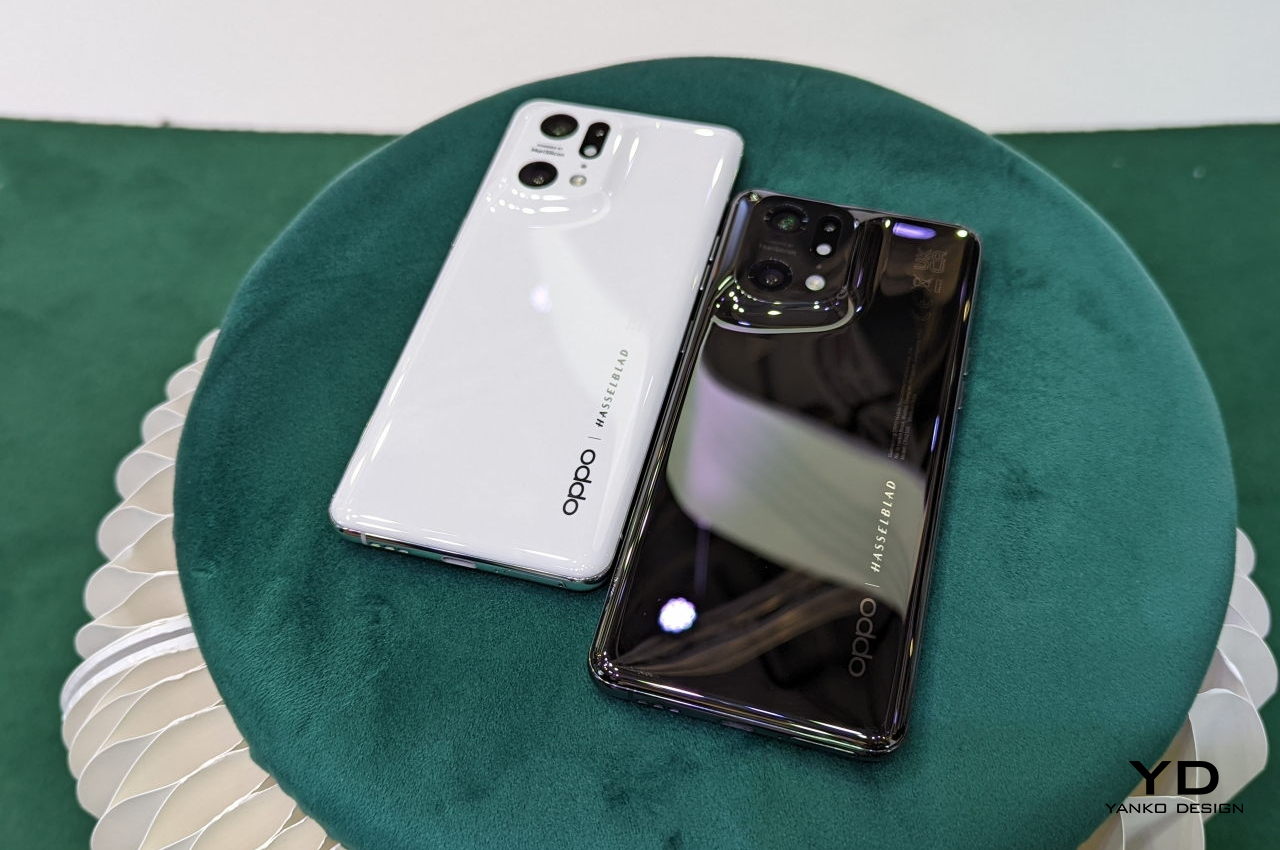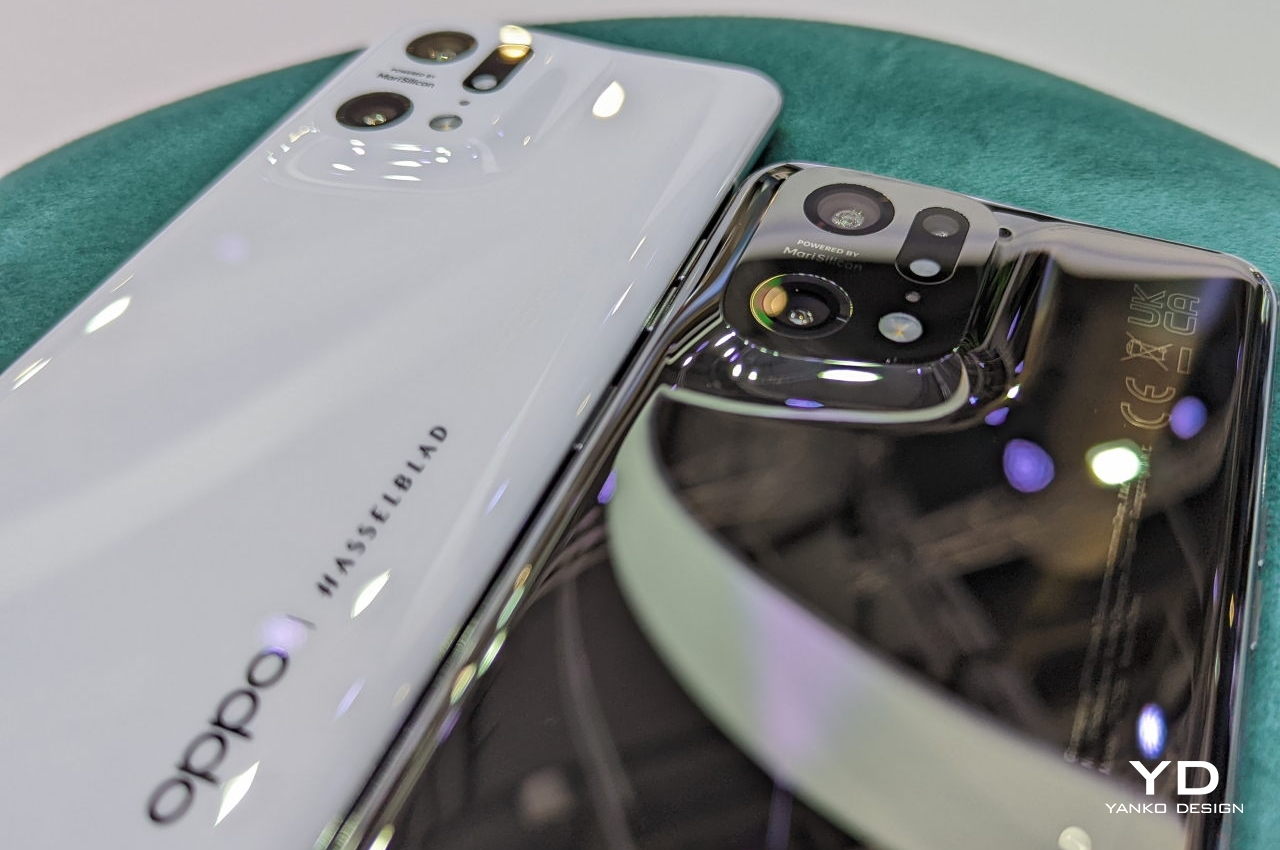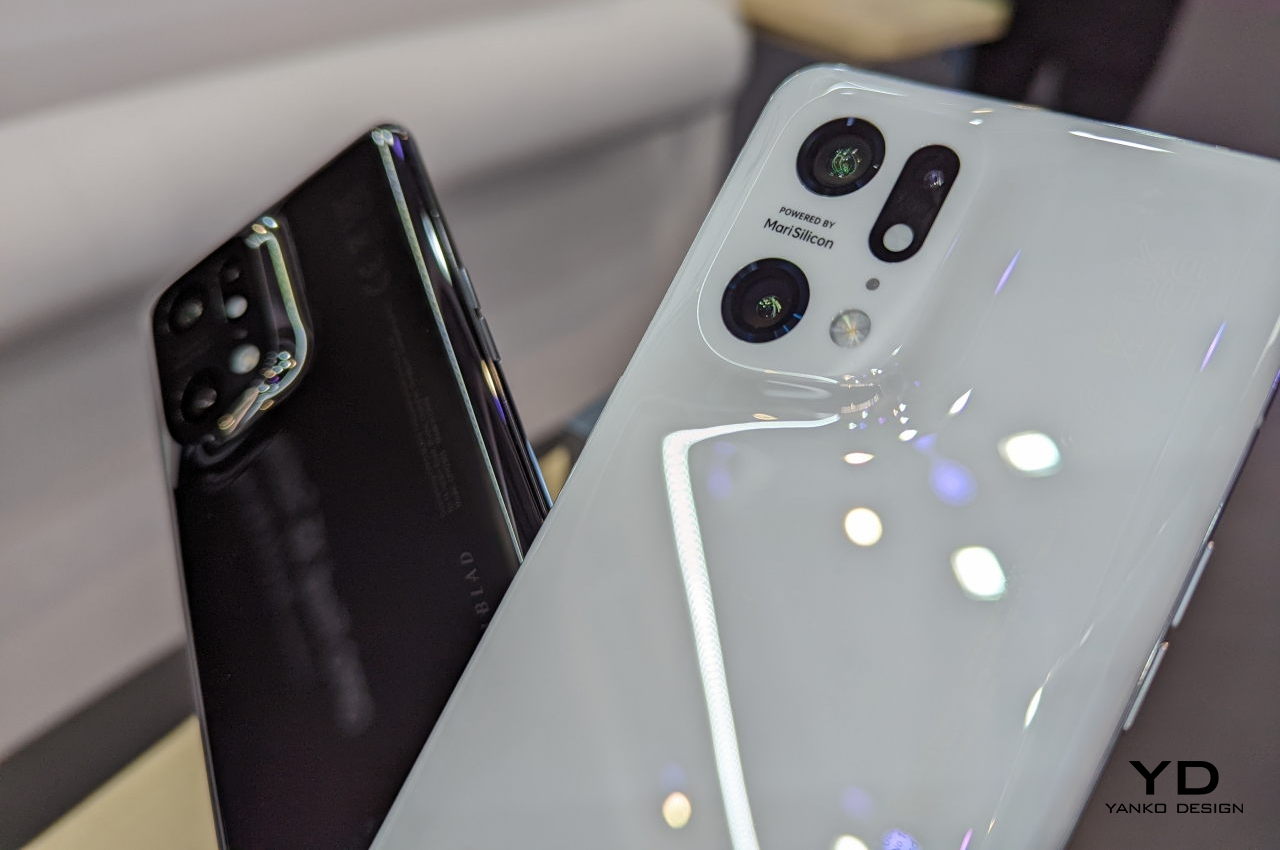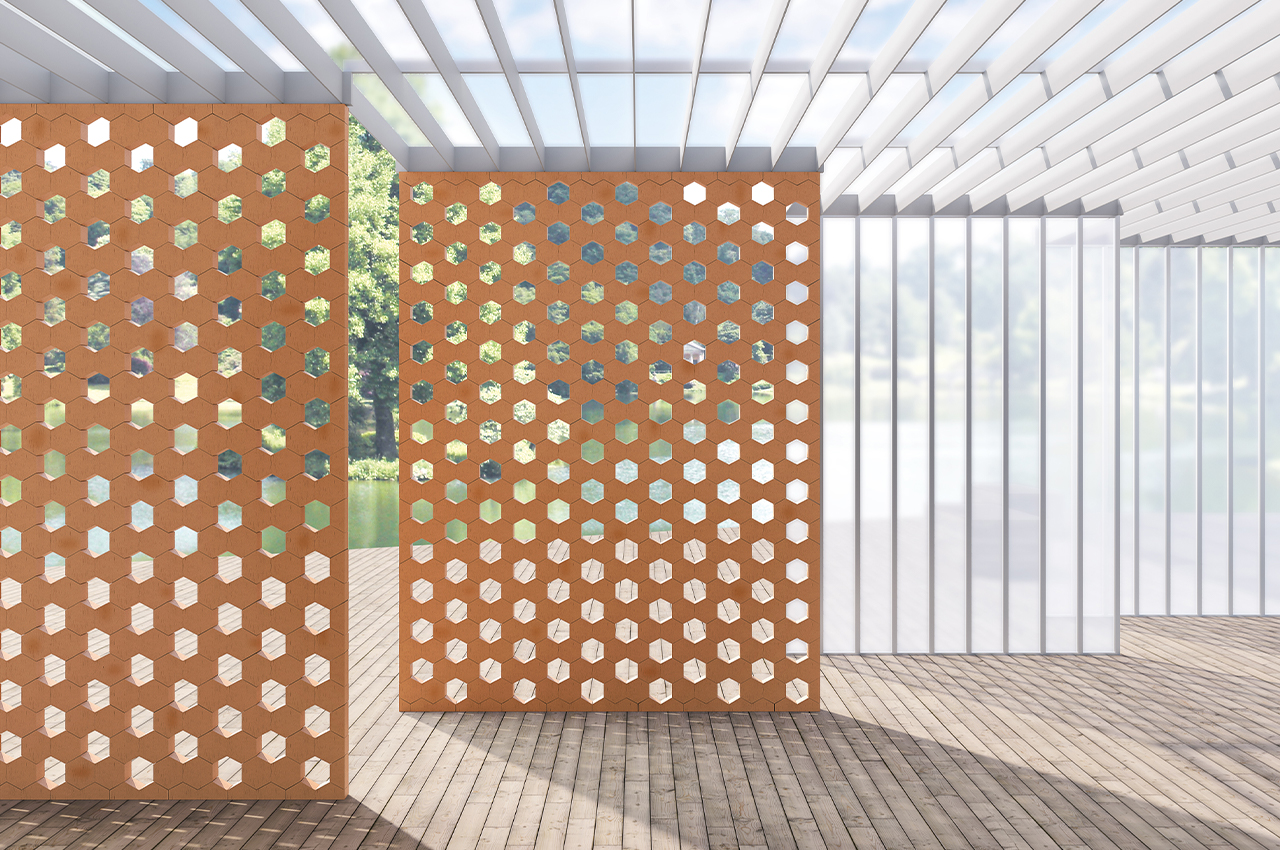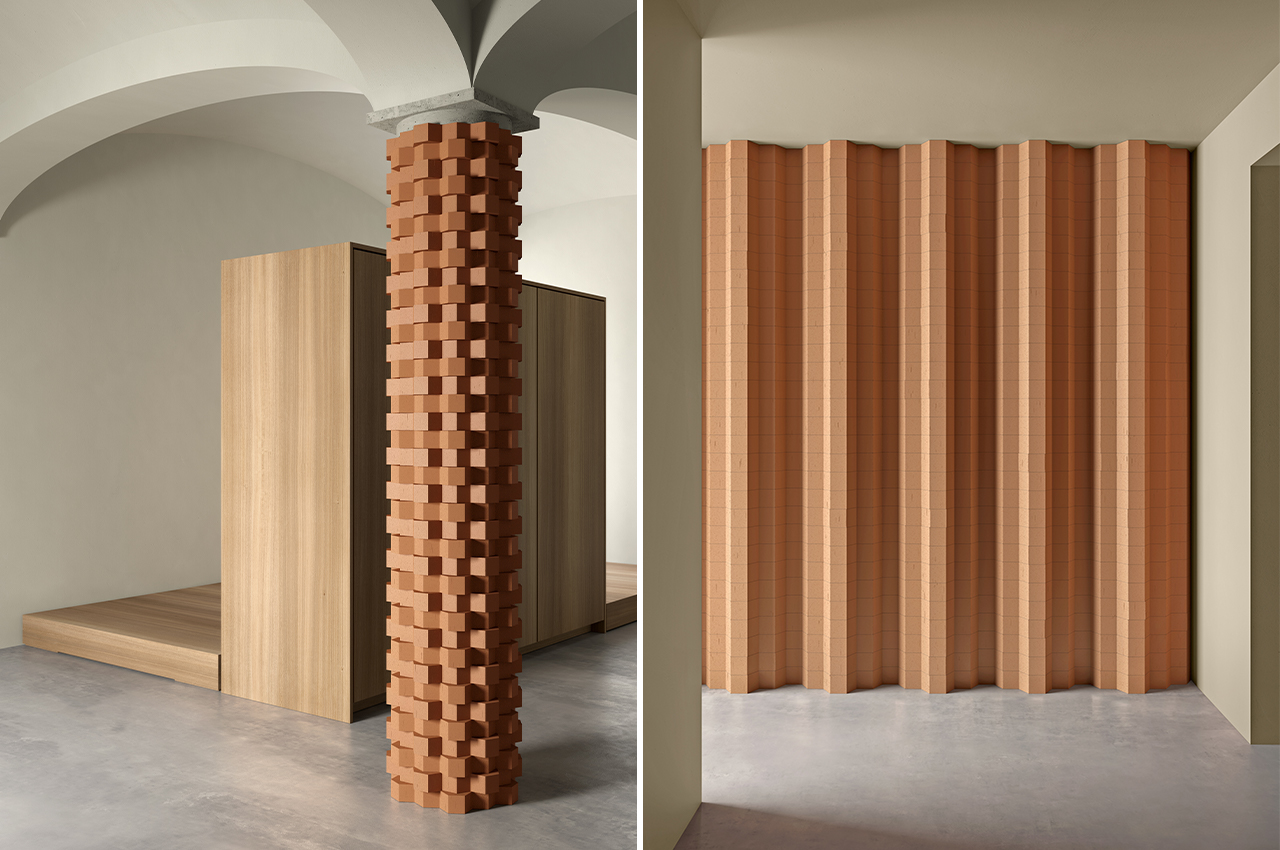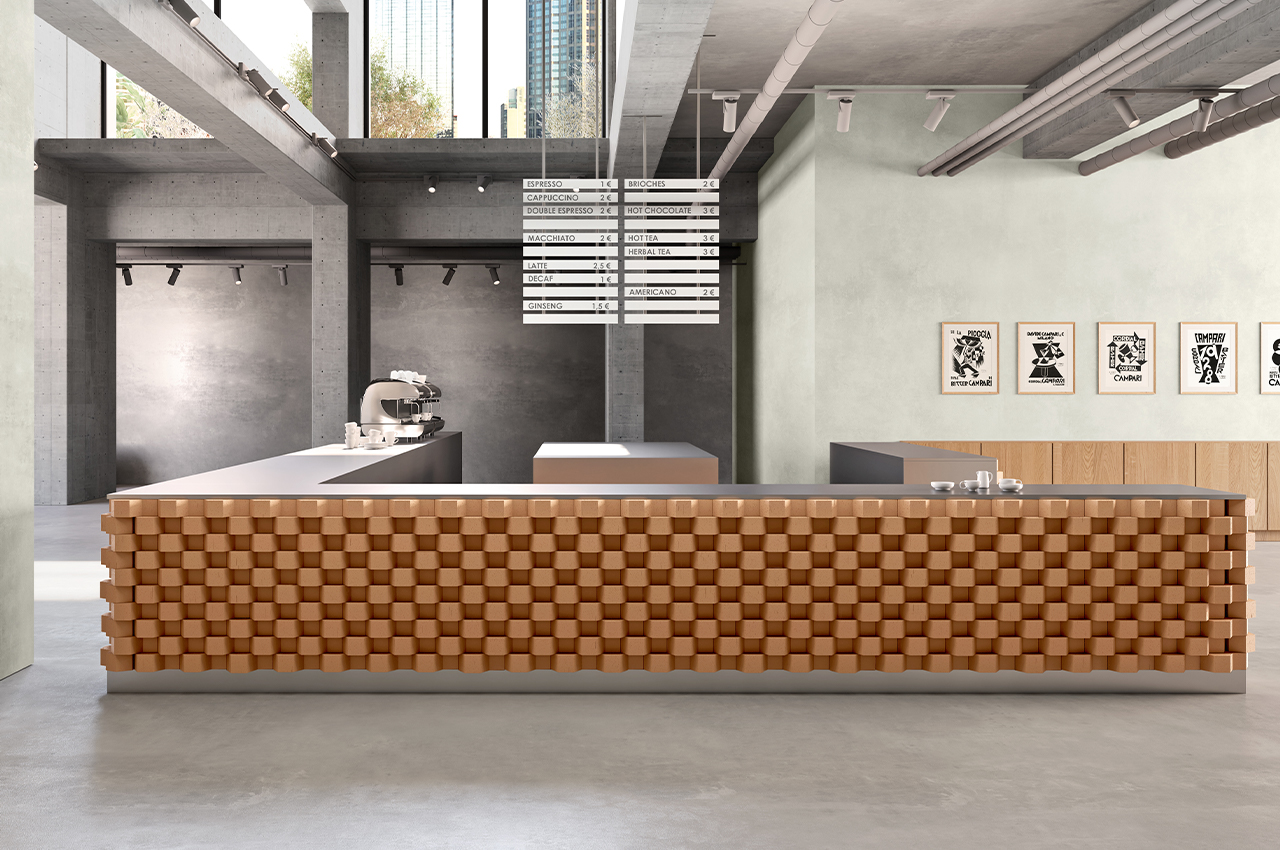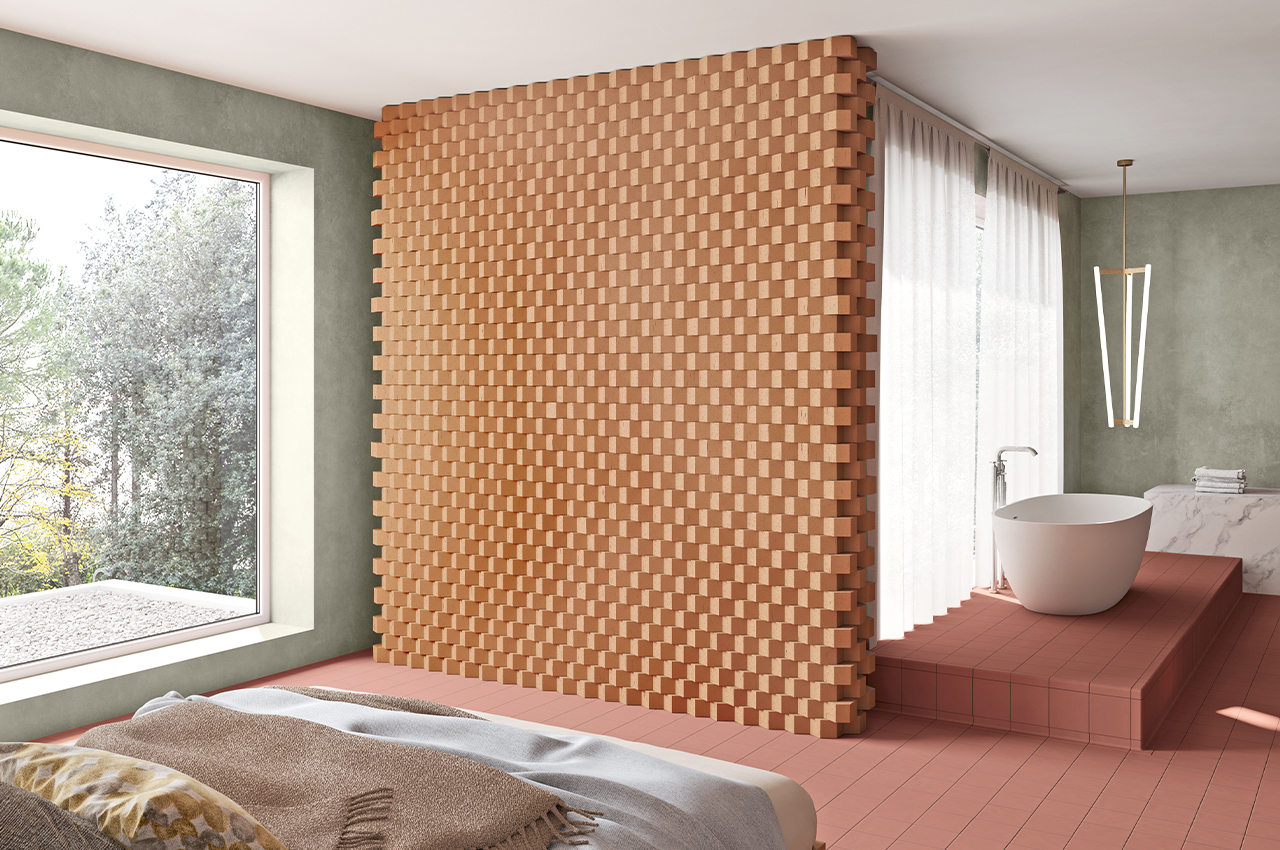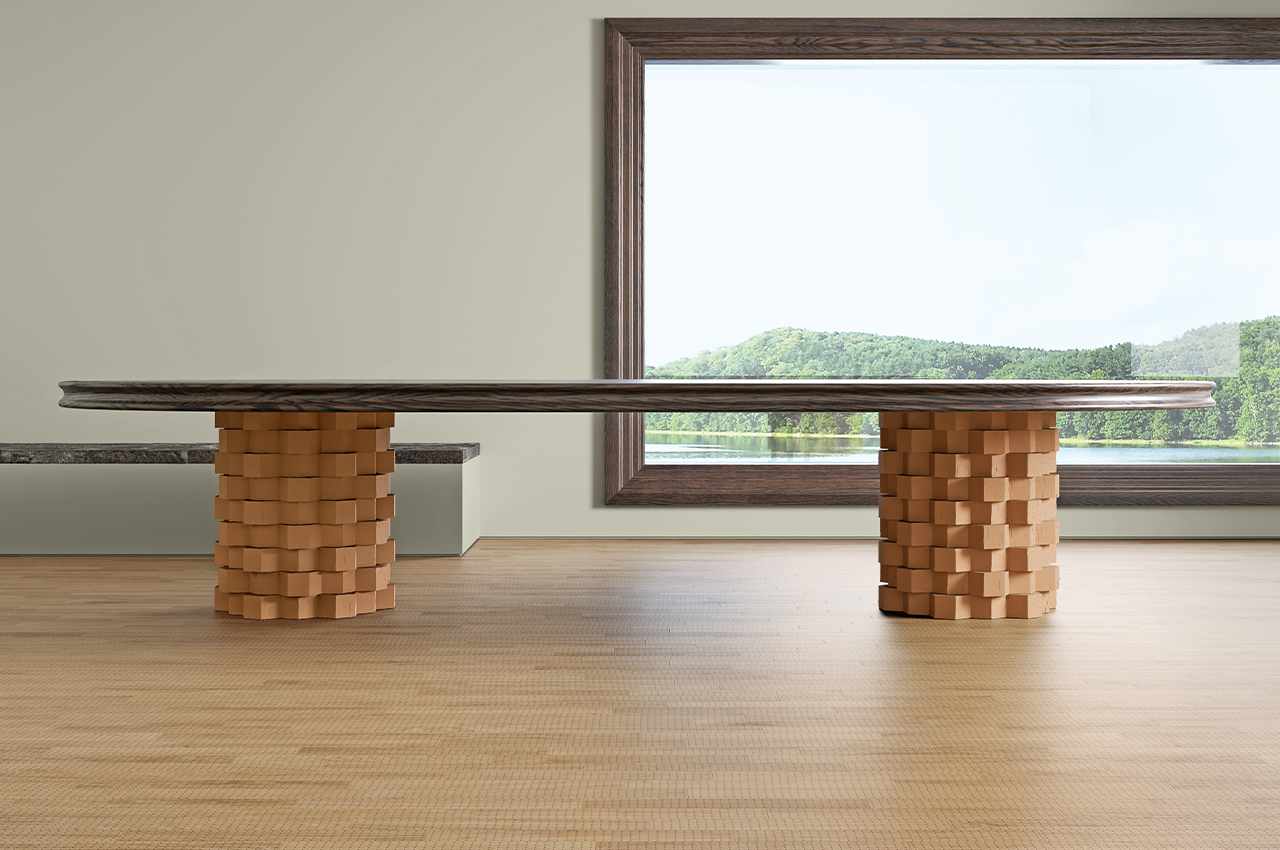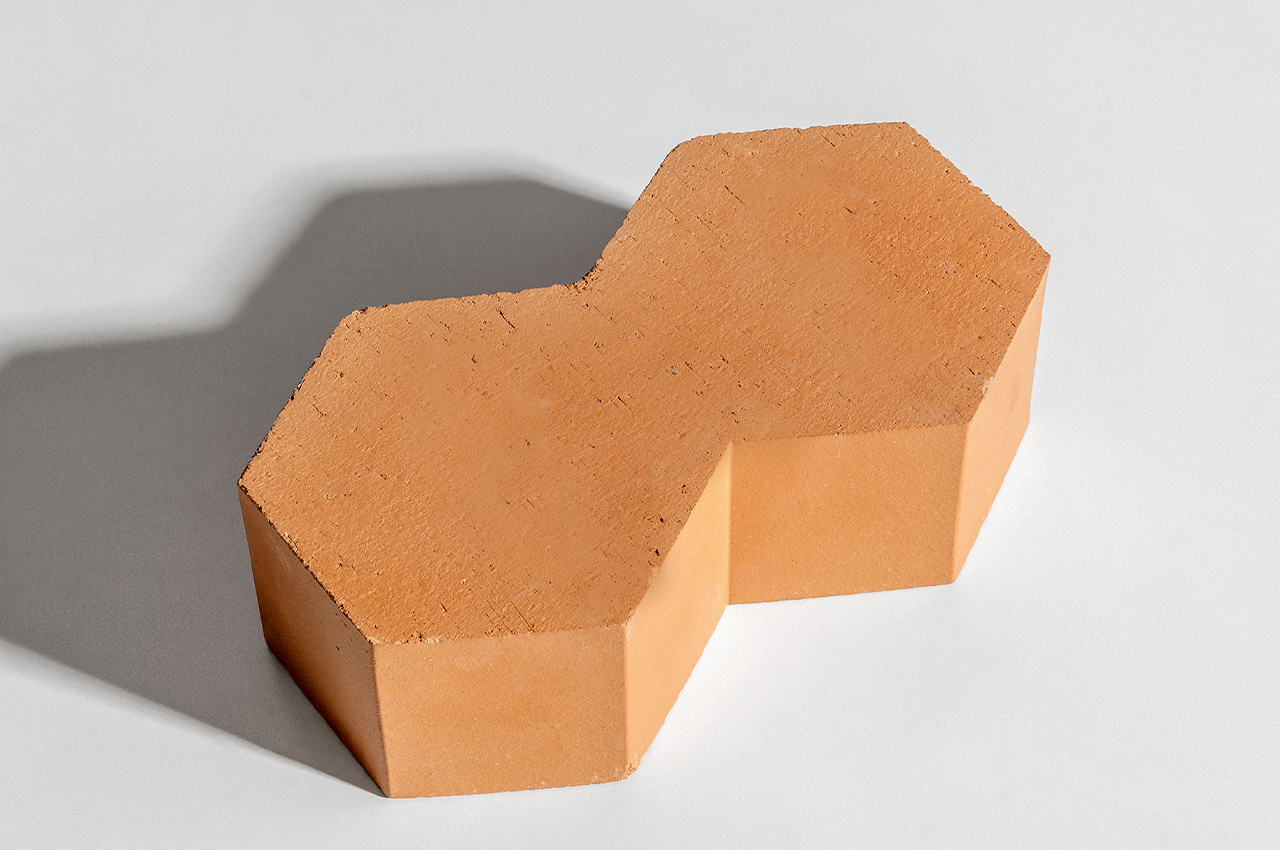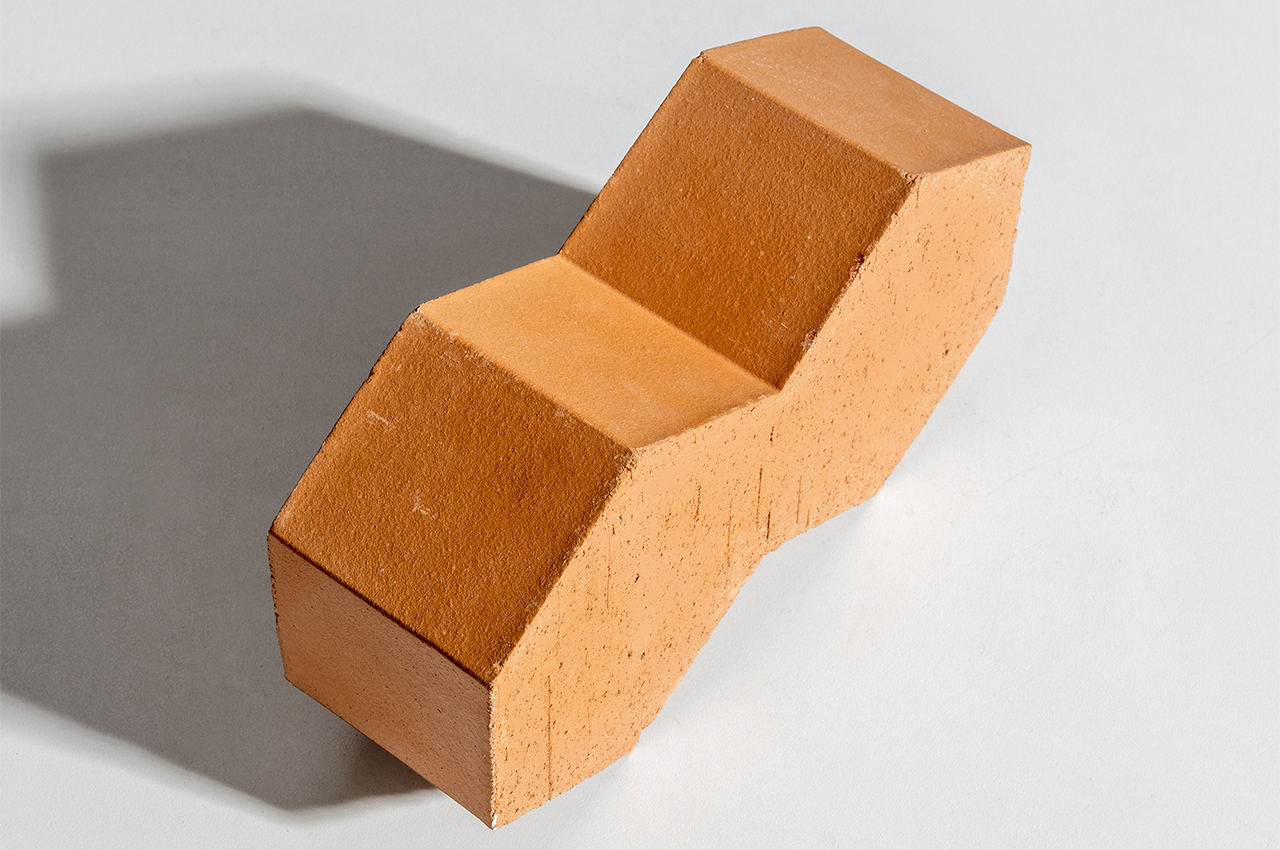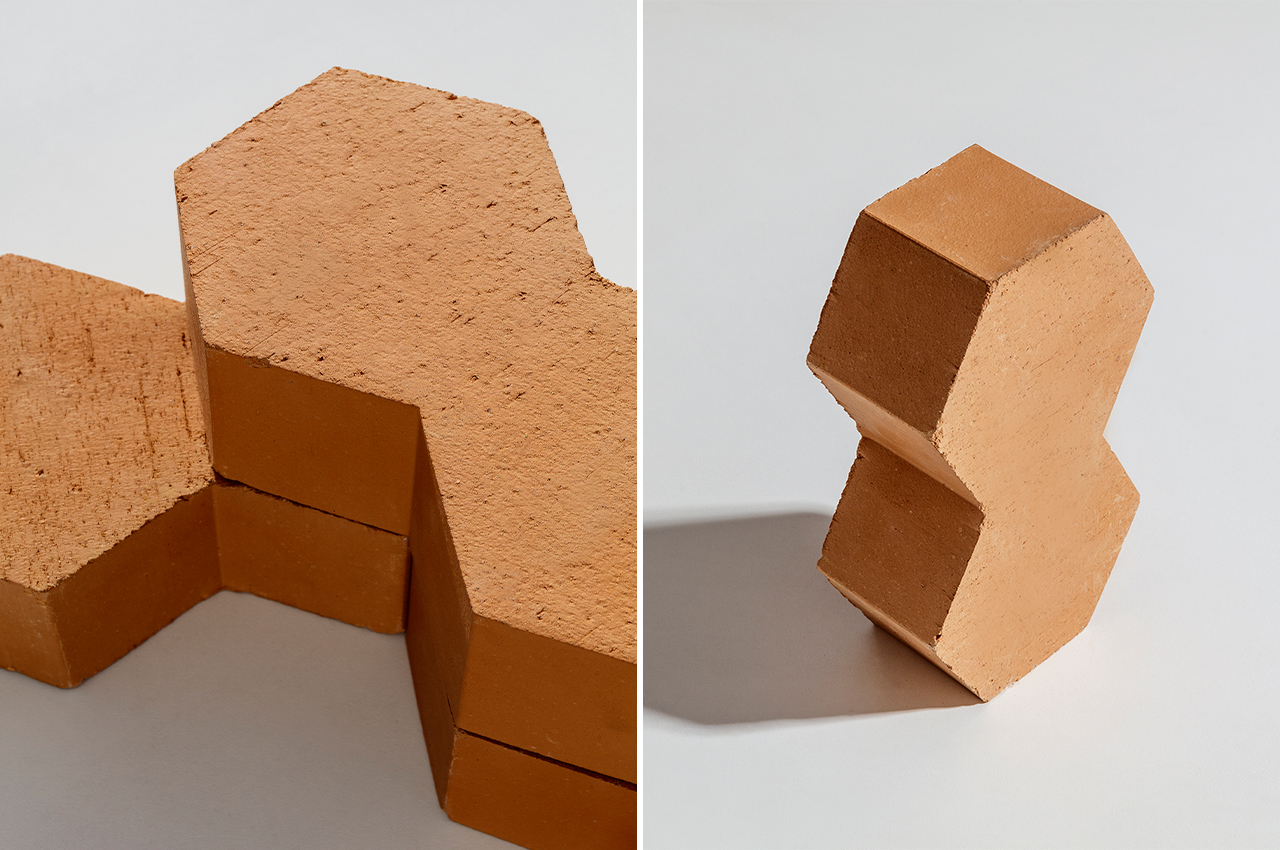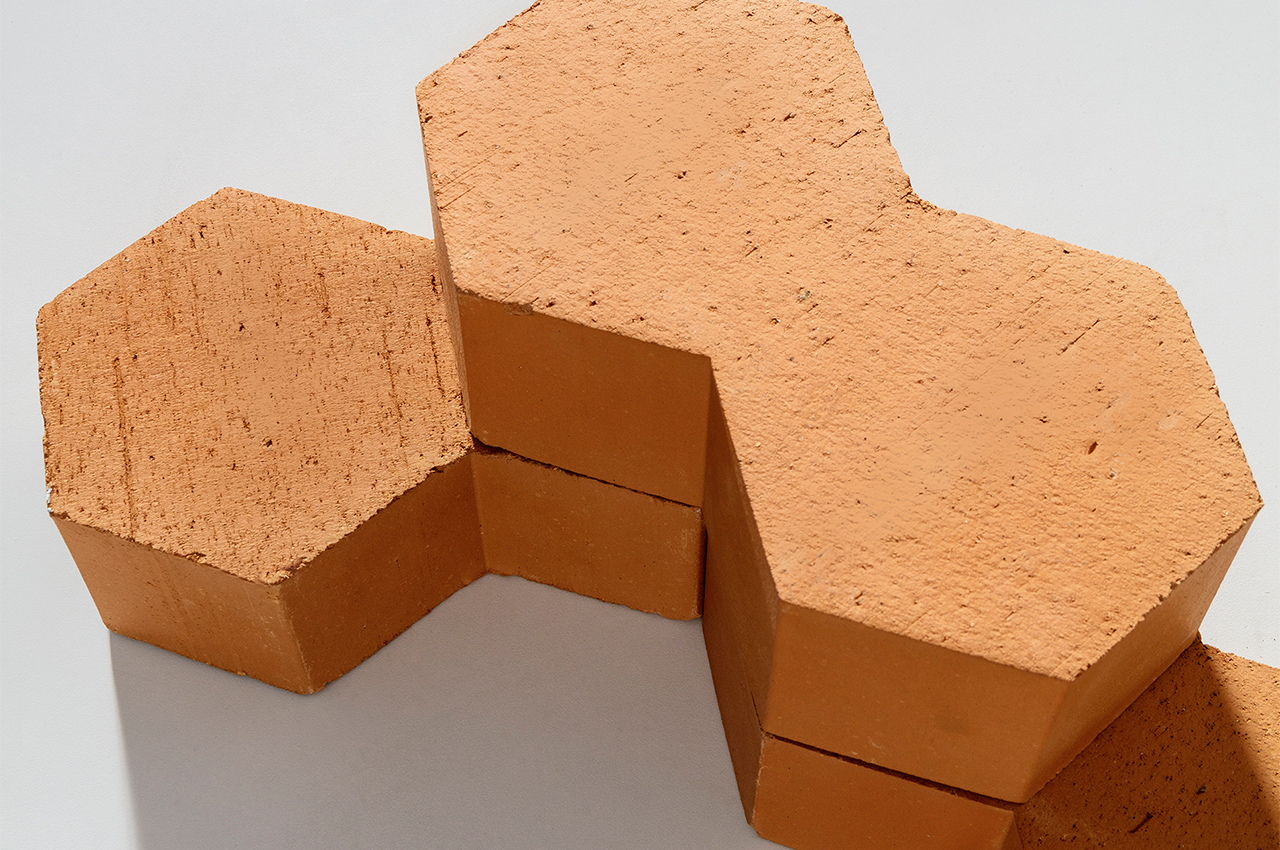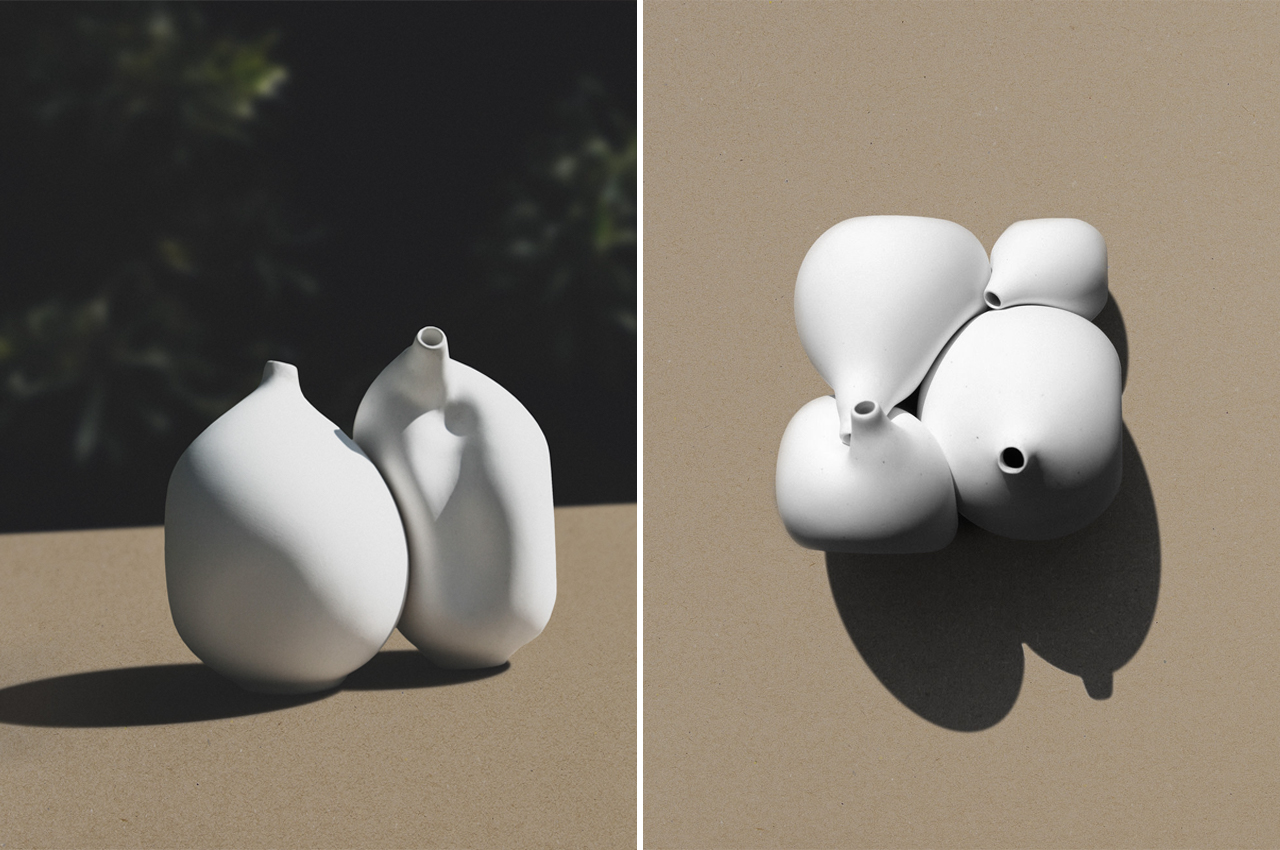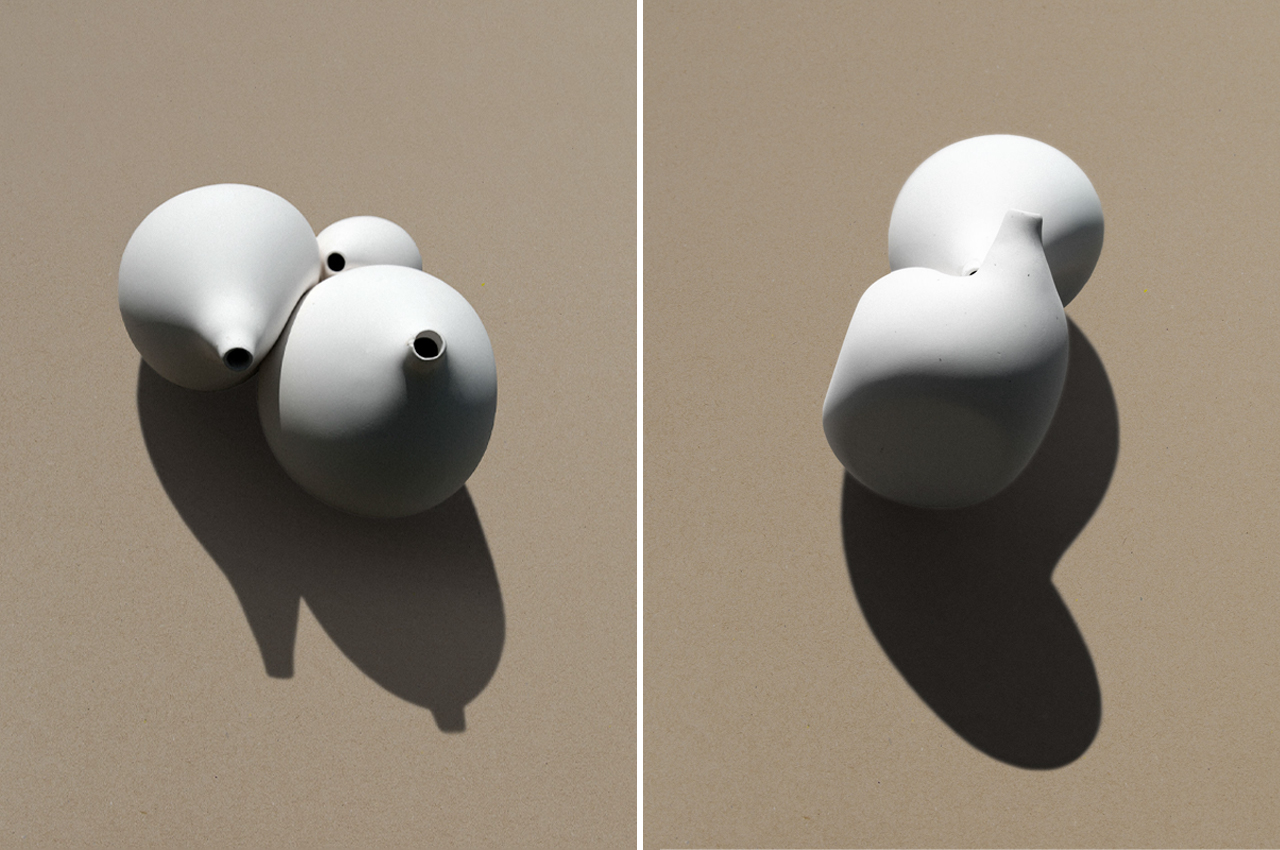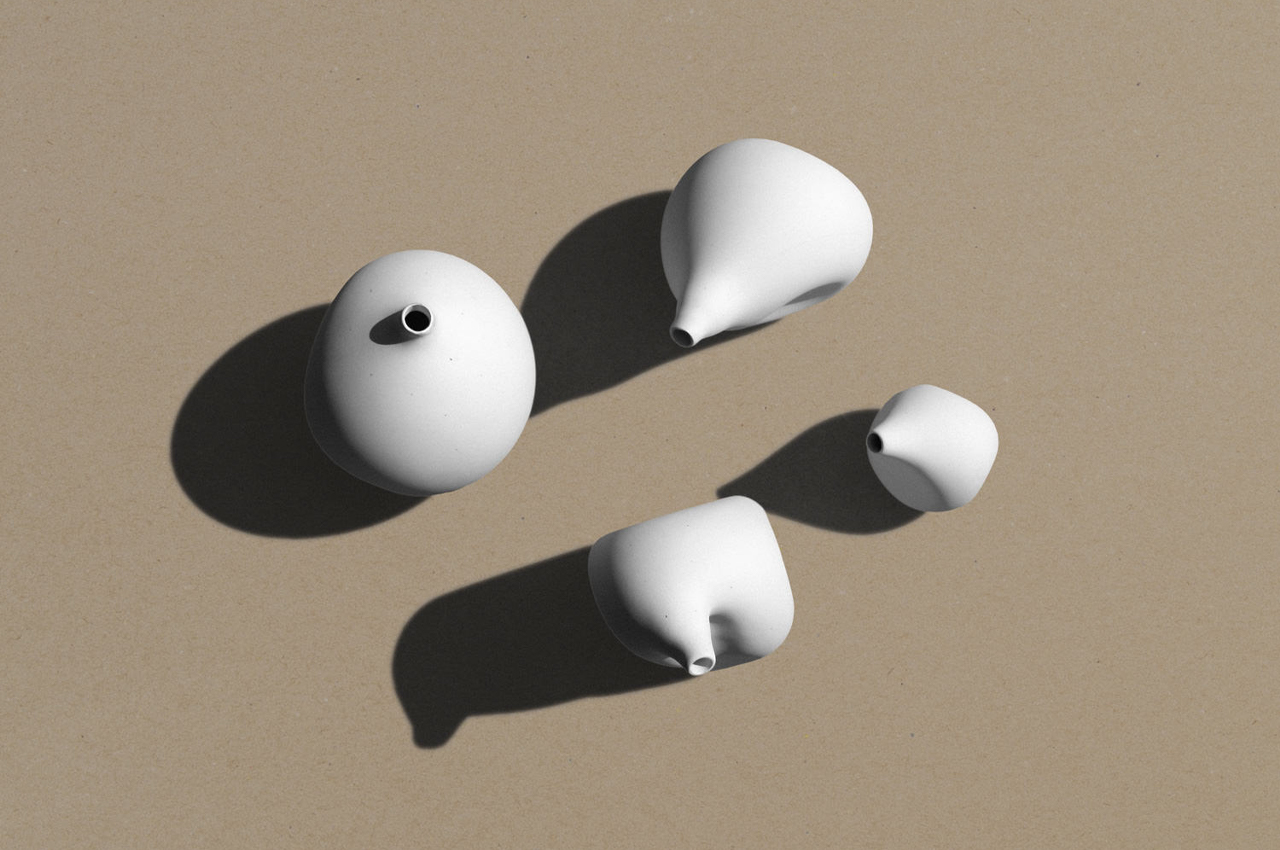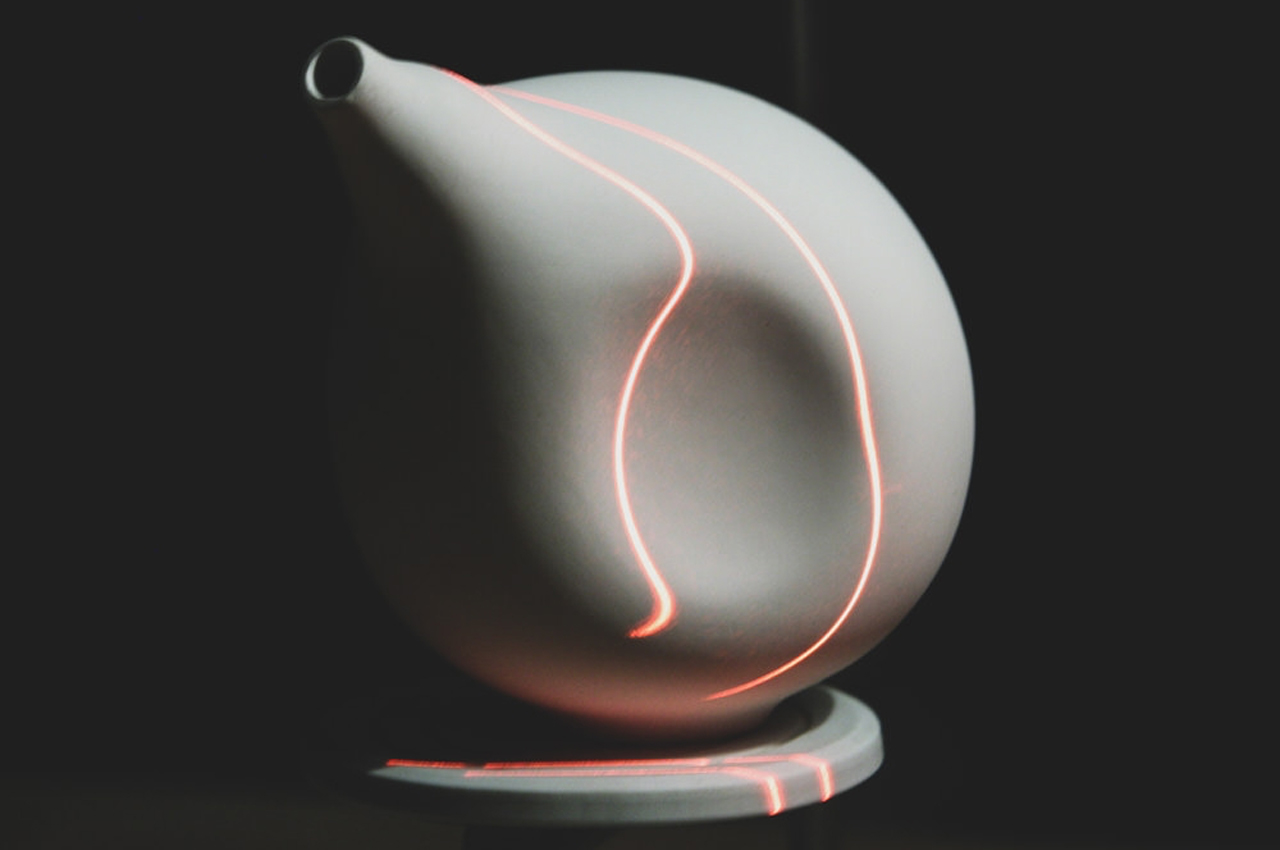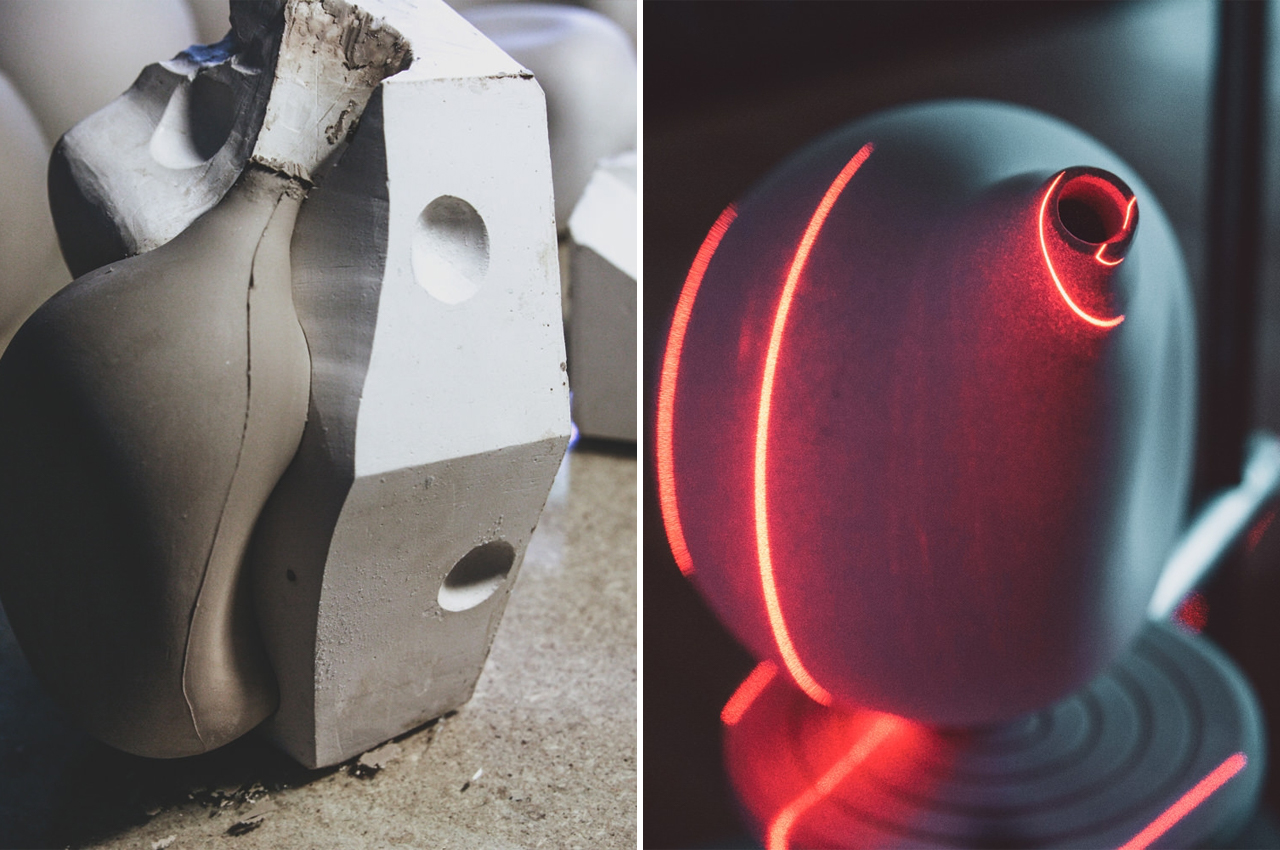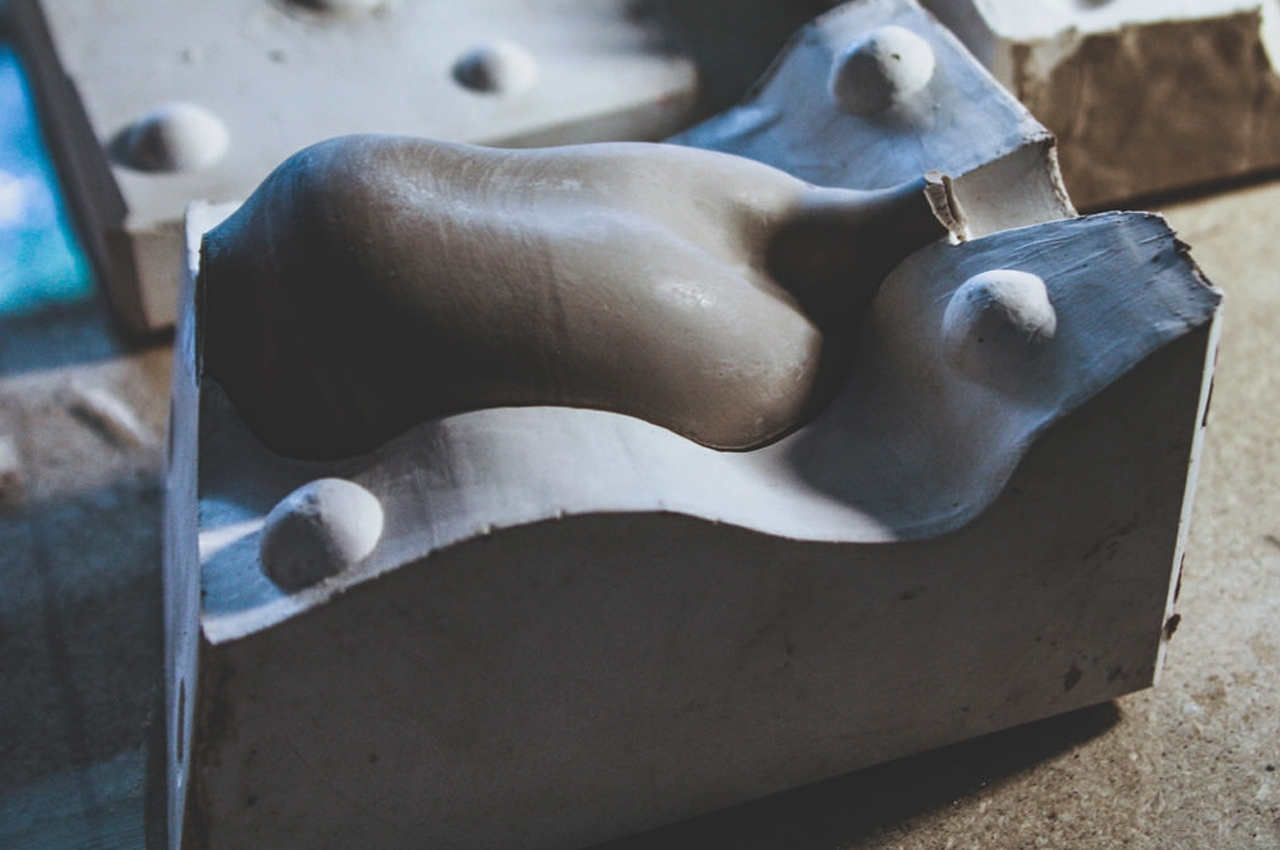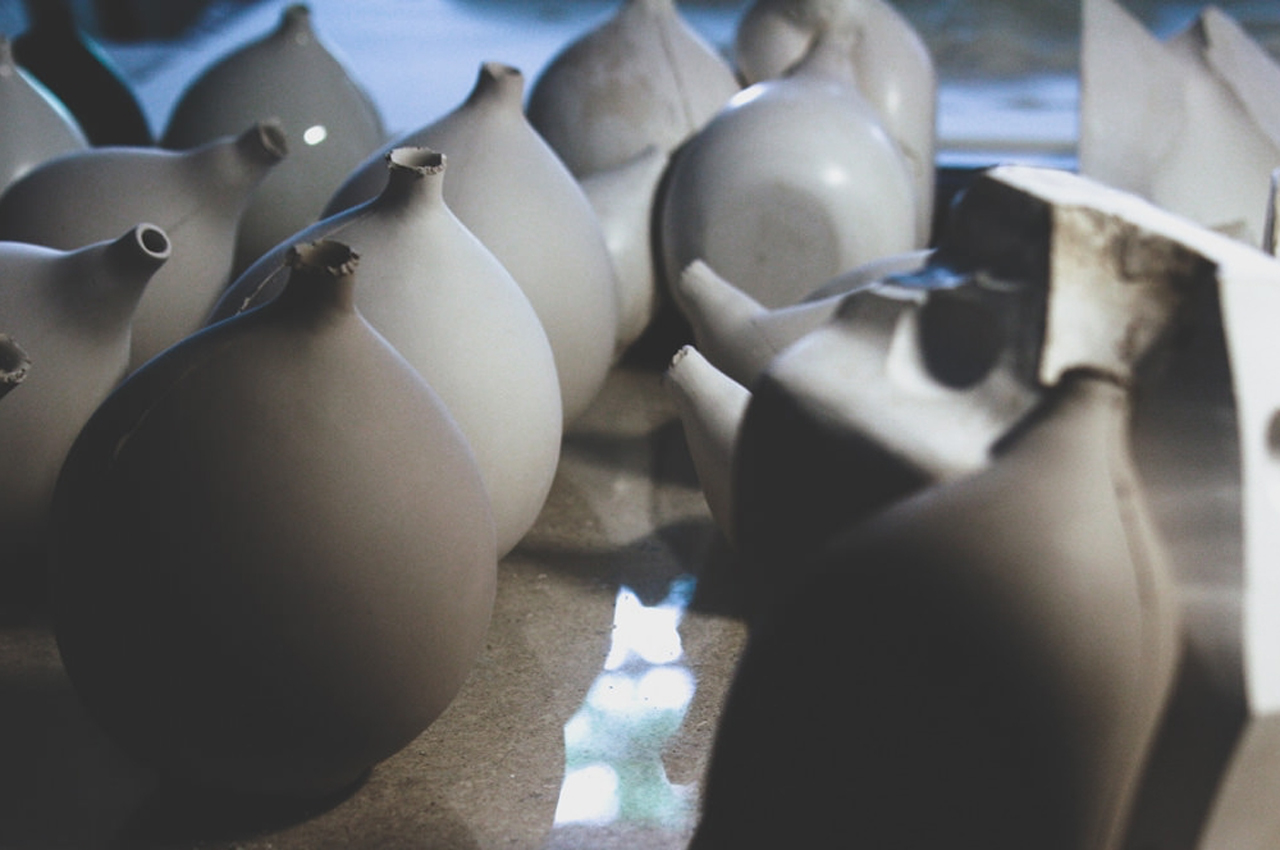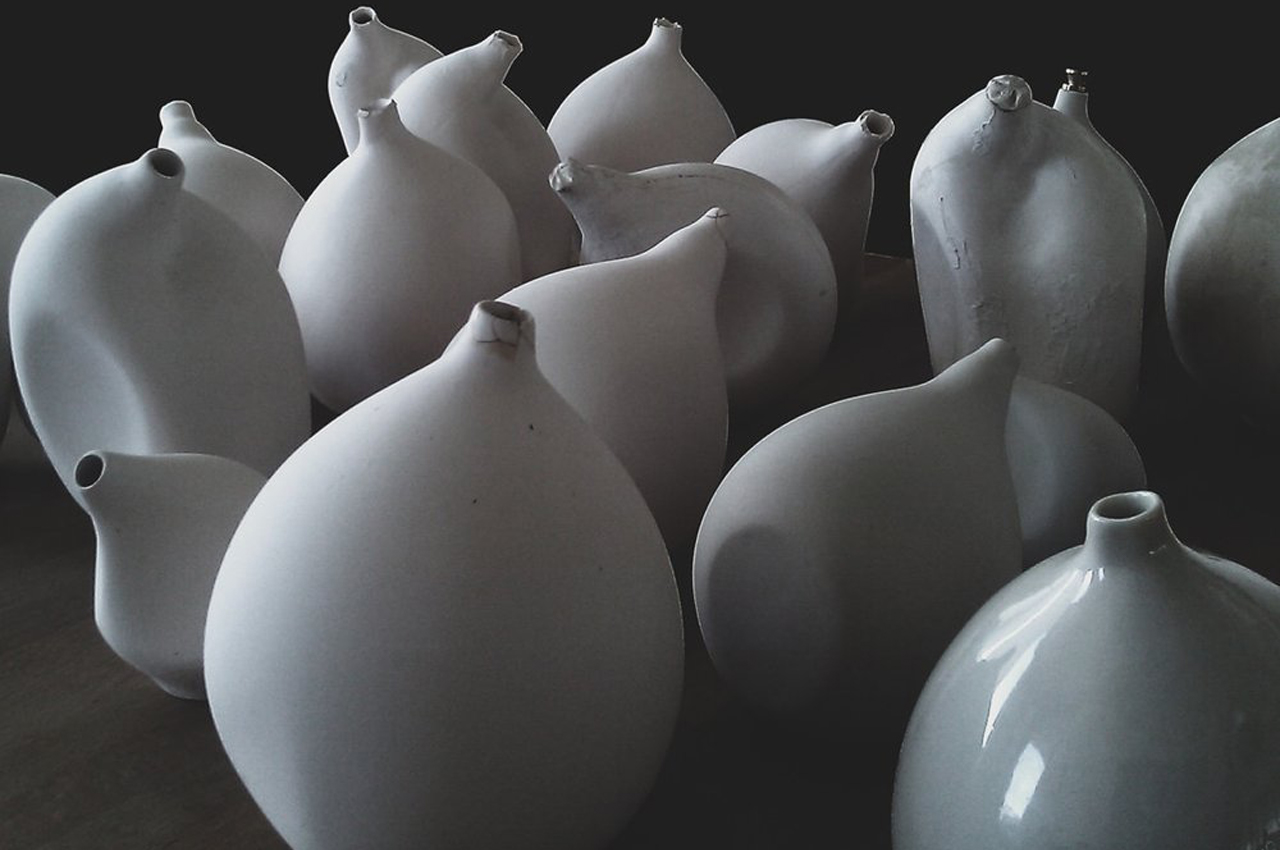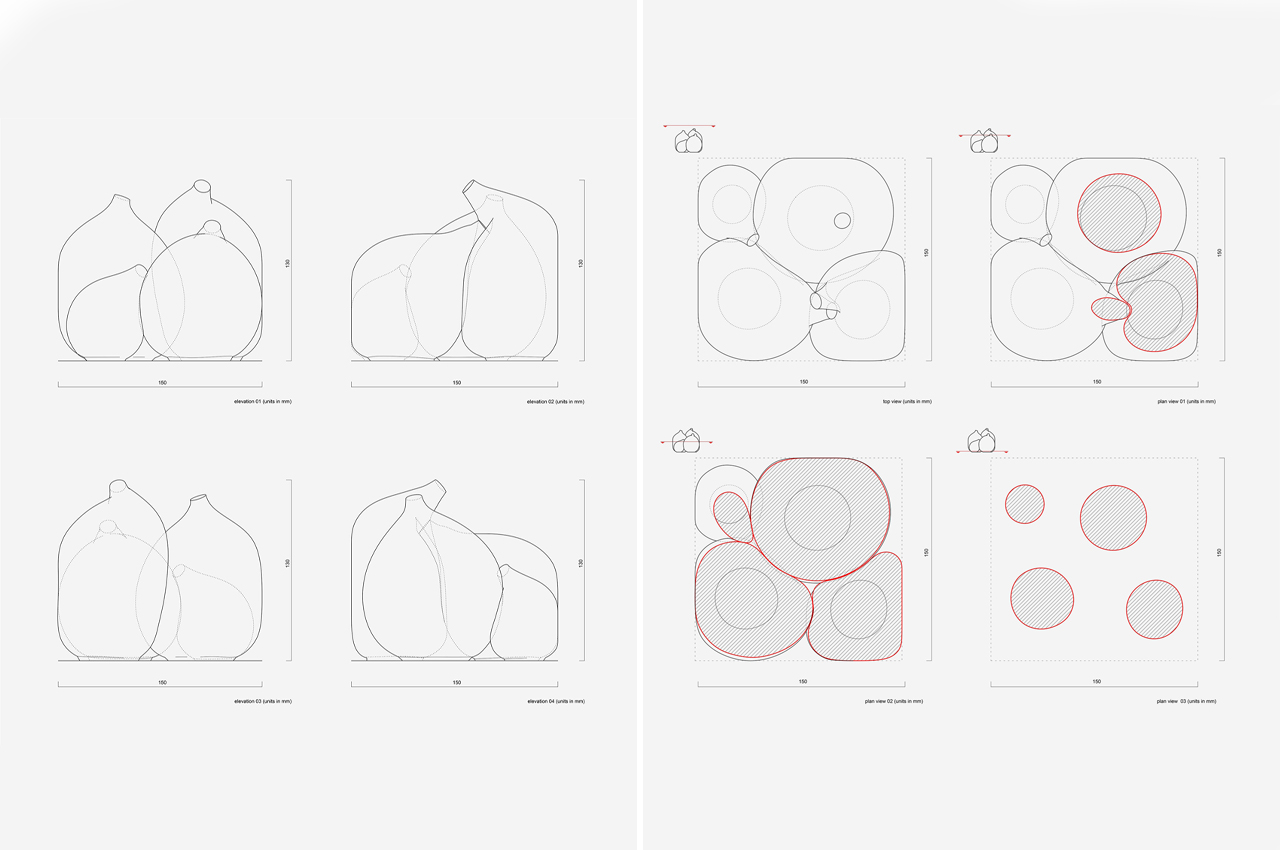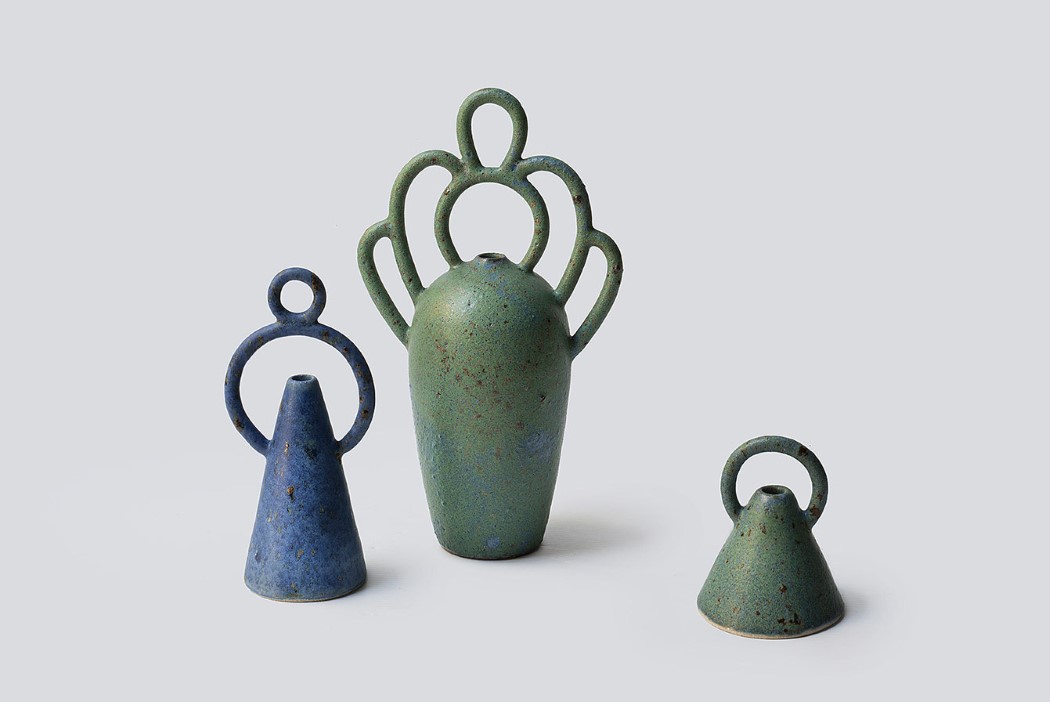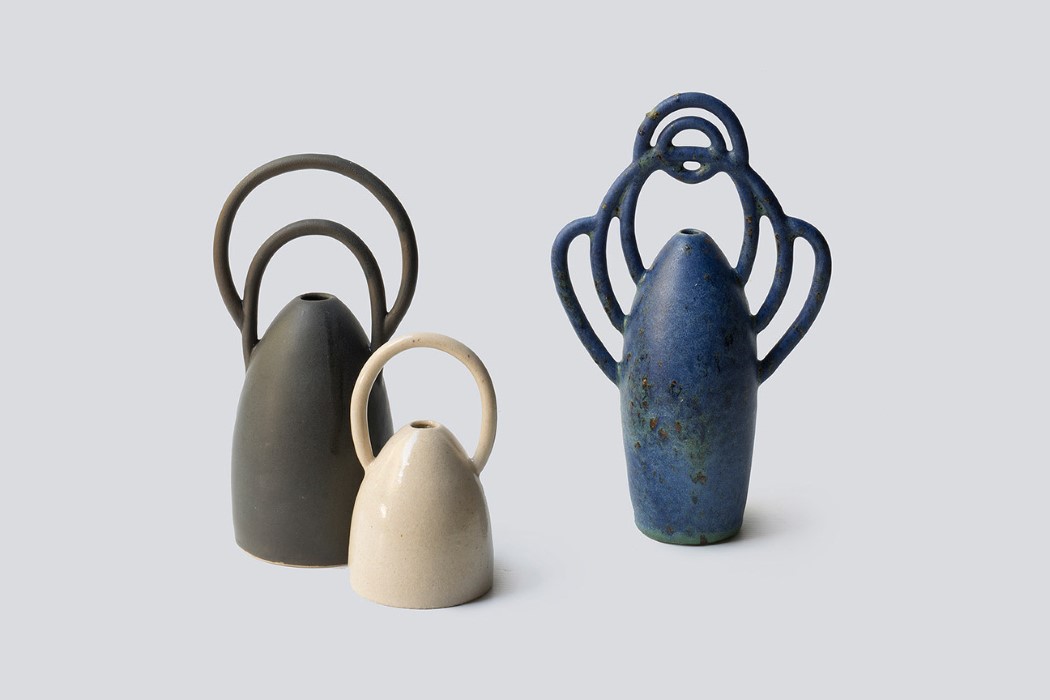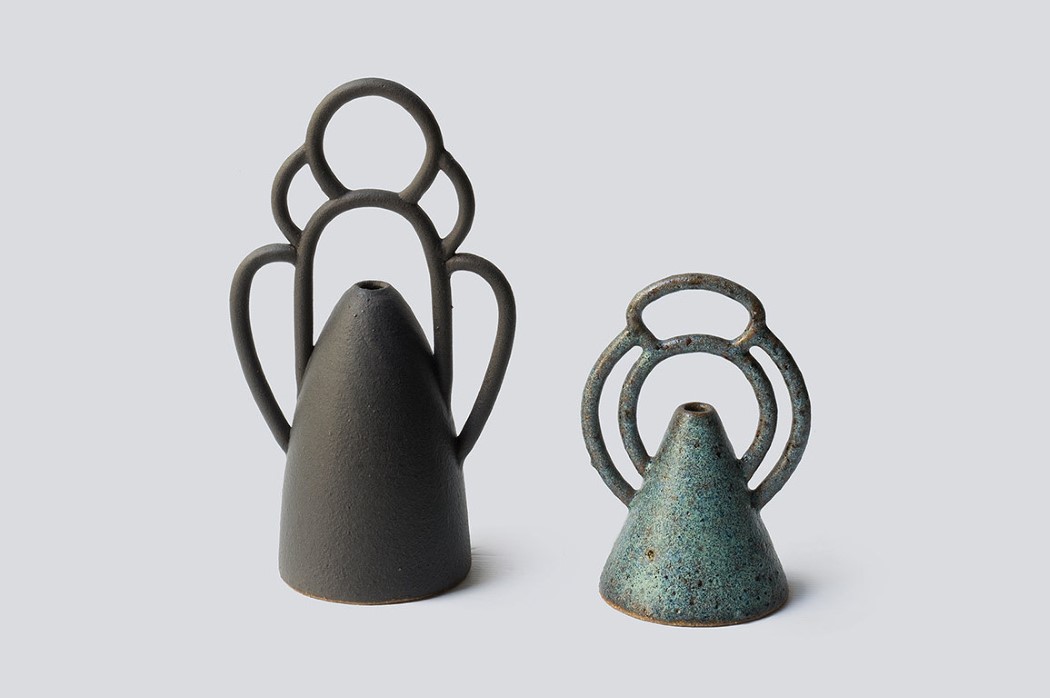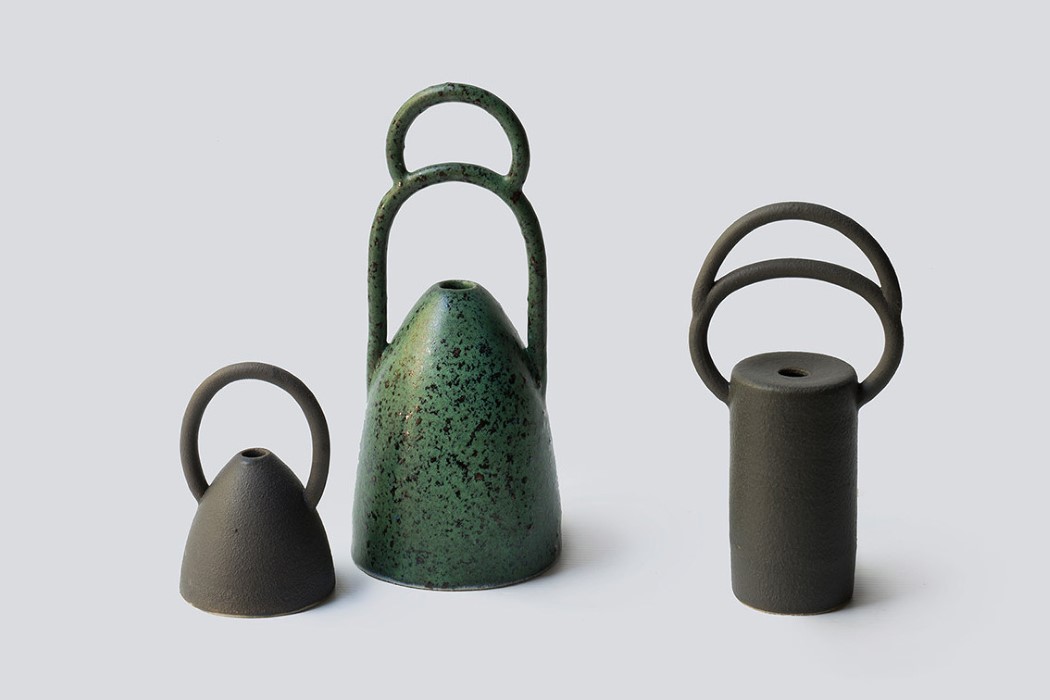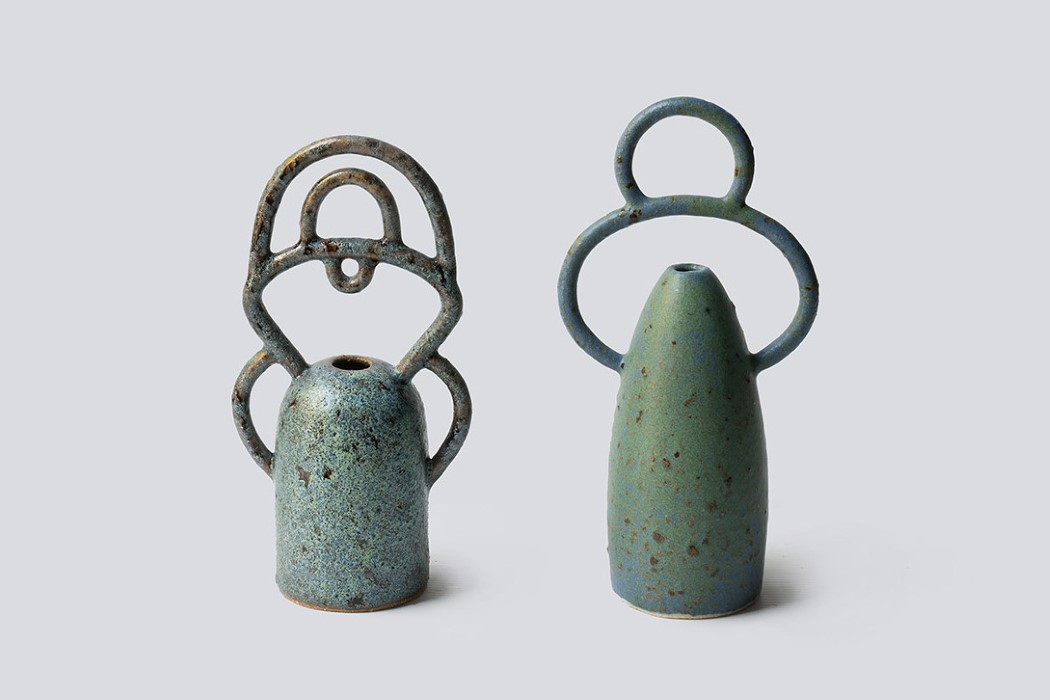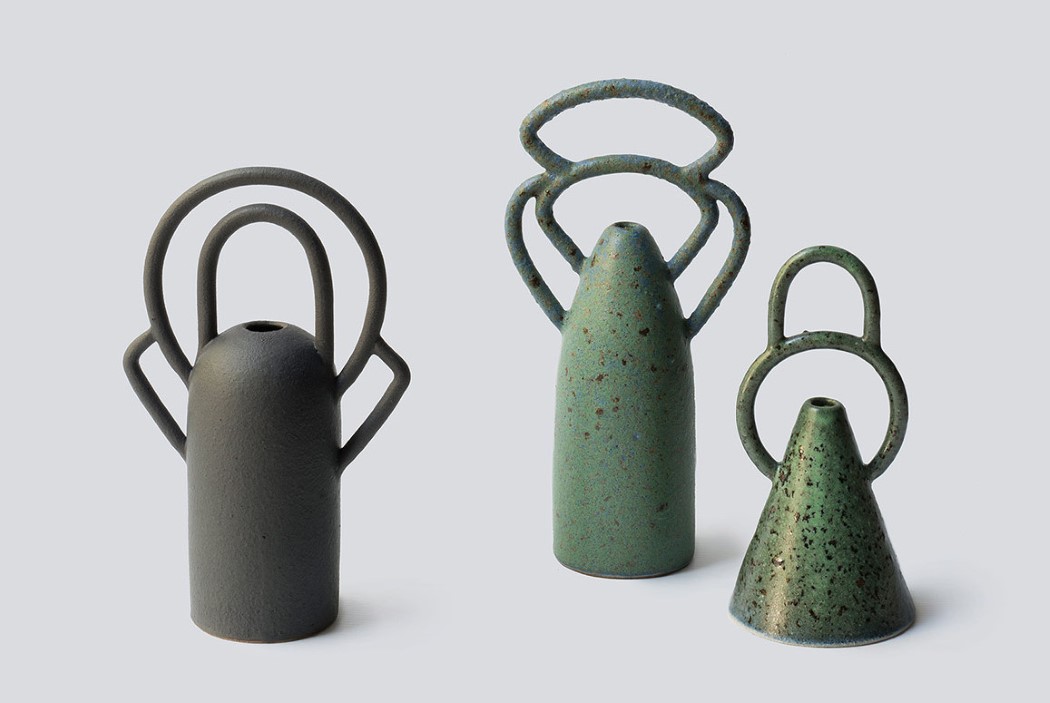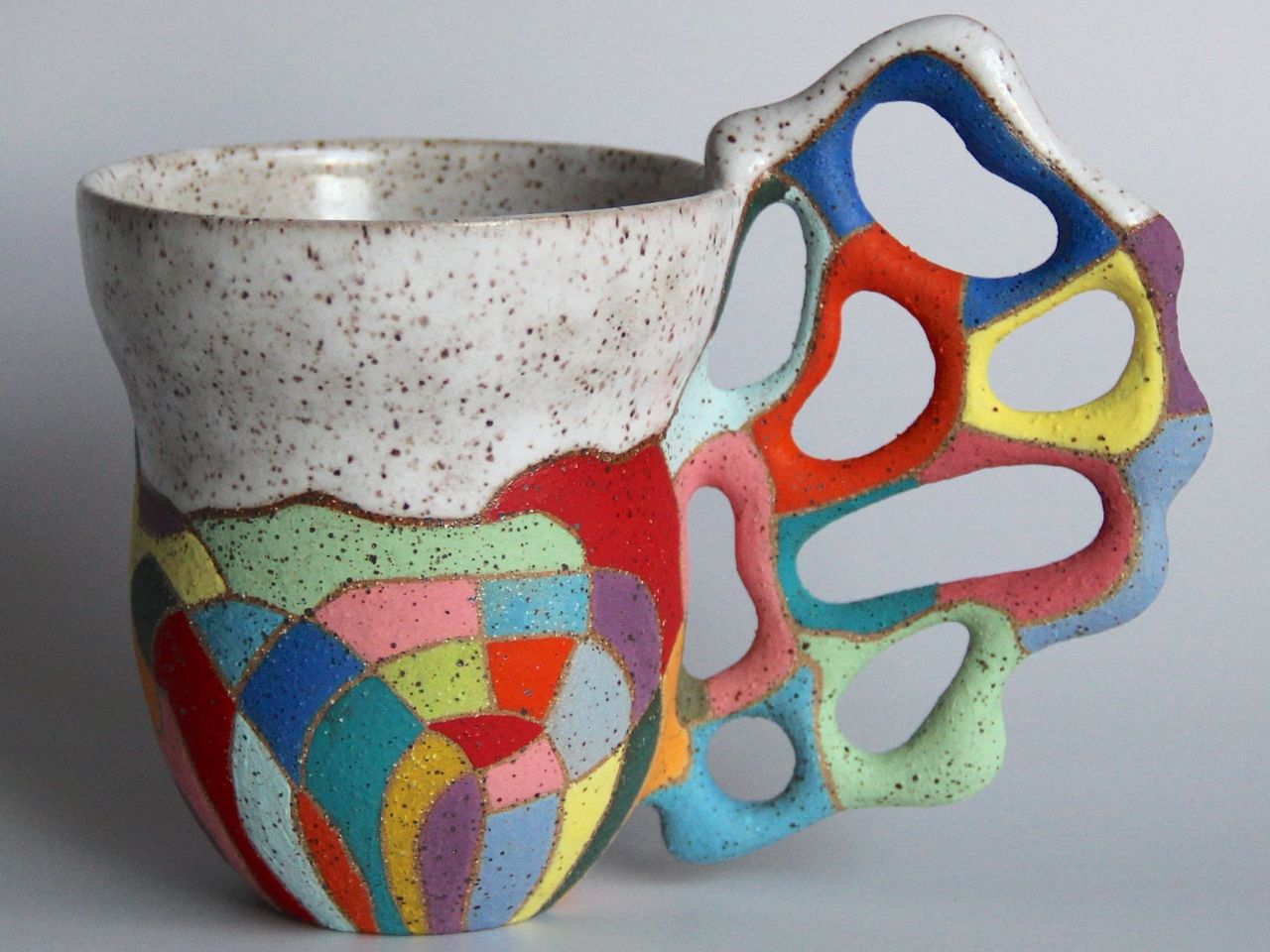
Jessica Thompson-Lee, a ceramic artist and educator originally from Kansas City, MO, now thriving in Brooklyn, New York, is transforming the way we think about ceramics. Her work is an exploration of the dynamic relationship between form and function, with each piece inviting a tactile journey as much as a visual one. Thompson-Lee’s creations don’t just sit on a shelf, they beckon you to touch, to hold, and to explore their intricate, biomorphic designs.
Designer: Jessica Thompson-Lee
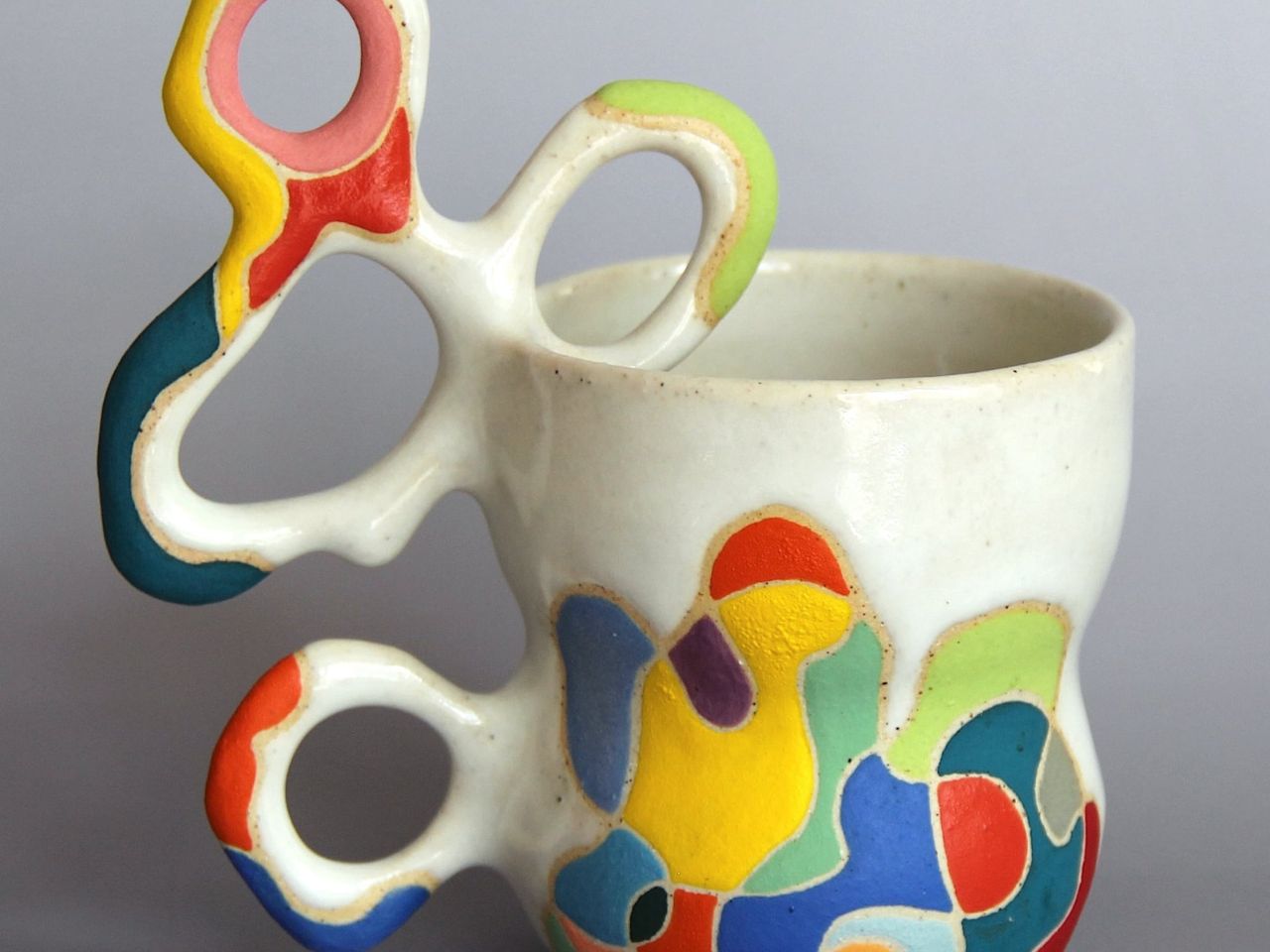
Inspired by the organic beauty of coral reefs, cellular structures, and the delicate networks of mycelium, her pieces are alive with movement. Handles on her mugs, for instance, aren’t mere attachments, they stretch and sprawl like living extensions of the vessel itself, creating web-like patterns that challenge the very idea of how a mug should be held. Each curve and twist invites you to find new, playful ways of interacting with the object, transforming the simple act of holding a mug into an engaging sensory experience.
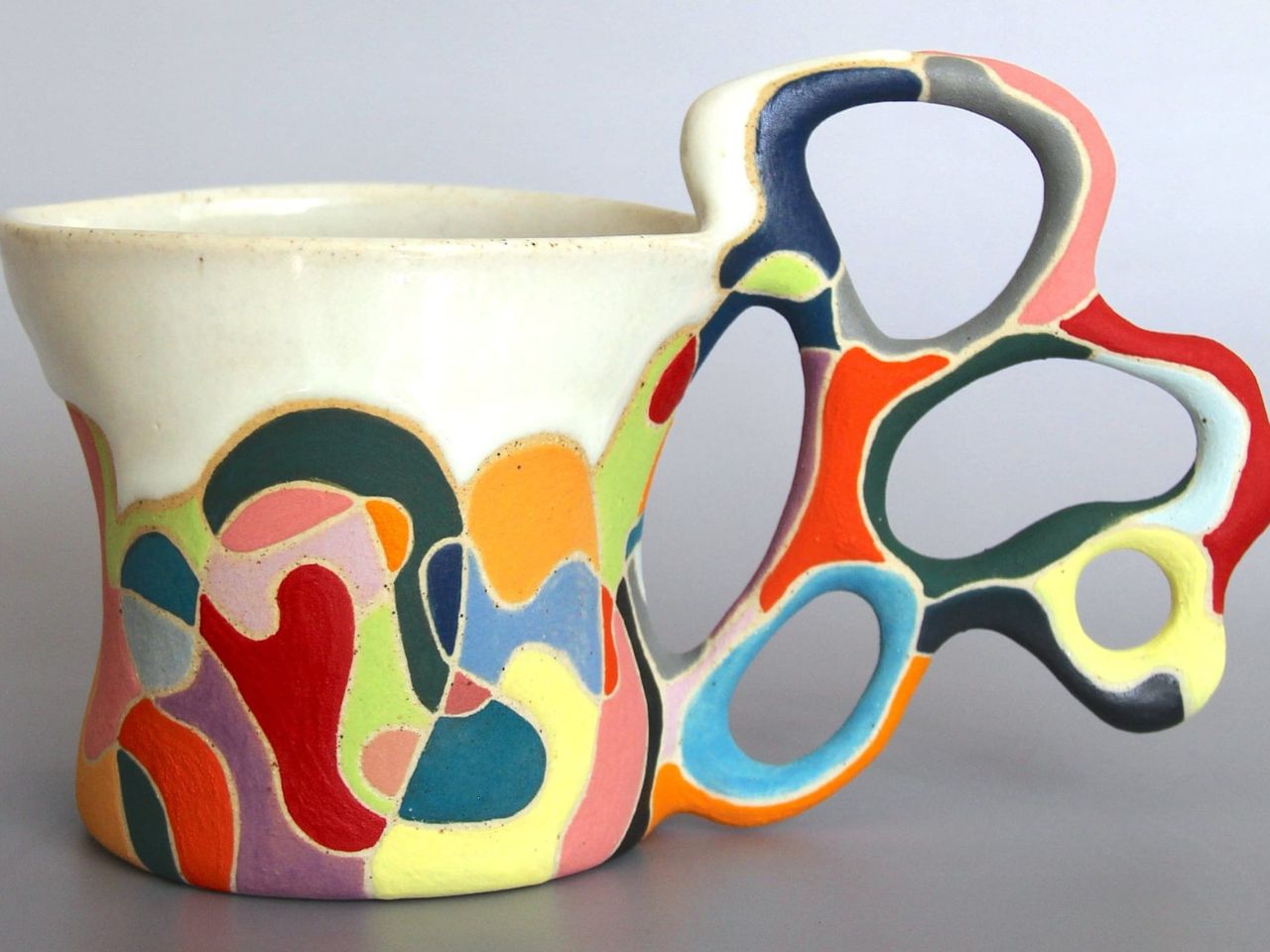
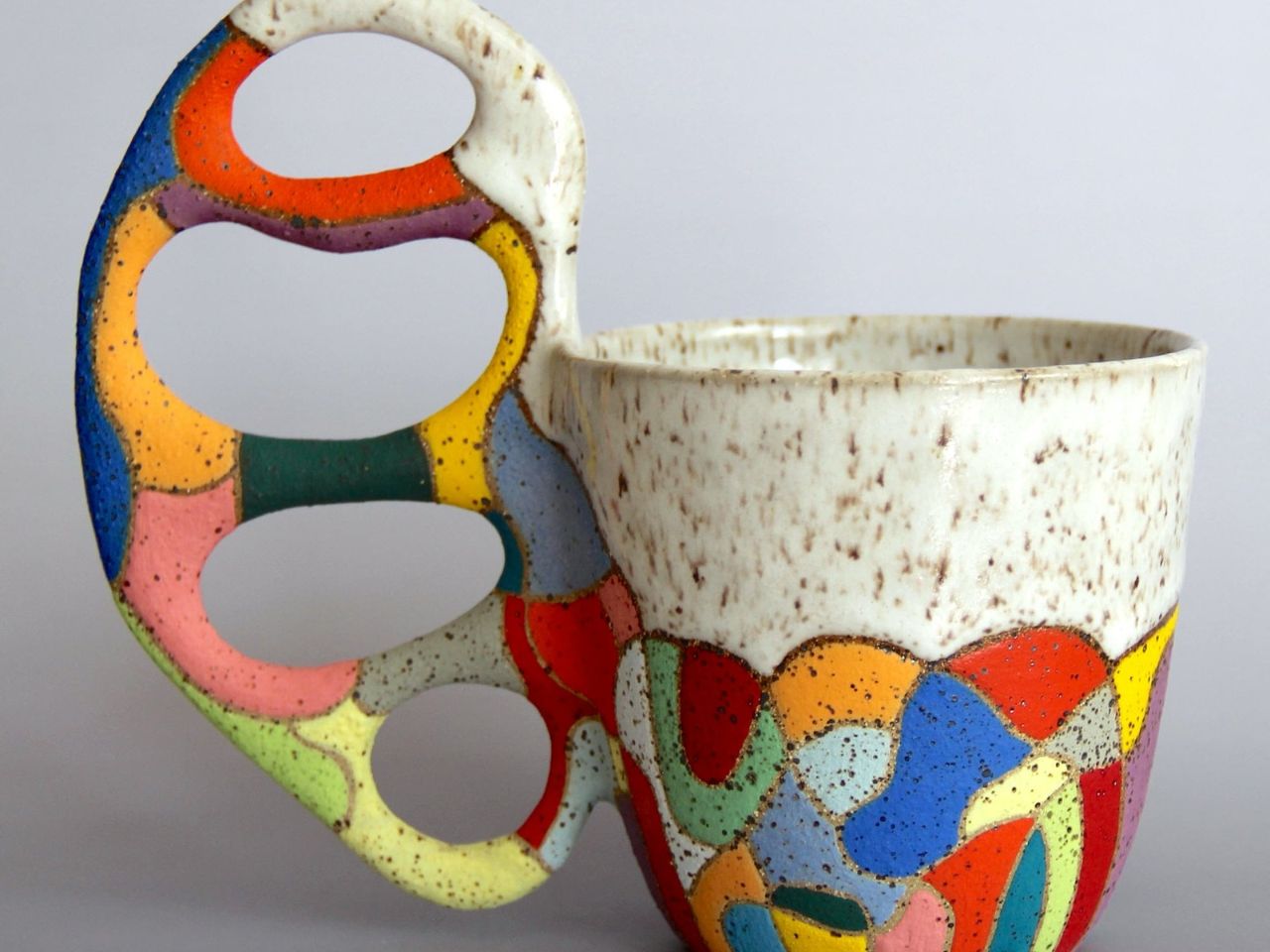
However, as beautiful as these designs are, one might wonder about their ergonomics. How comfortable is it to actually put your fingers through those differently shaped holes, and what kind of grip can one get? The intricate designs may offer visual allure, but they could pose a challenge when it comes to practical use. The unconventional placement of the handles might make it difficult to get a secure hold, raising concerns about the balance between art and utility. The delicate structure, while visually striking, might make one hesitant to use the mug for its intended purpose, fearing that it could break. But, you would never know until you actually hold one, it might just surprise you with great comfort. Either way, the piece can definitely add value to your space with its charm.
The magic of Thompson-Lee’s work doesn’t just lie in the finished product but in the journey of its creation. In her Brooklyn studio, she begins each piece with what she calls “sketching with clay,” an approach that’s as spontaneous as it is deliberate. With a squeeze bottle filled with liquid clay, she lets her hands guide the design onto a plaster slab, embracing the unpredictable nature of the process. This element of surprise and fluidity infuses her work with joyful spontaneity, making each piece as unique as the moment it was born.
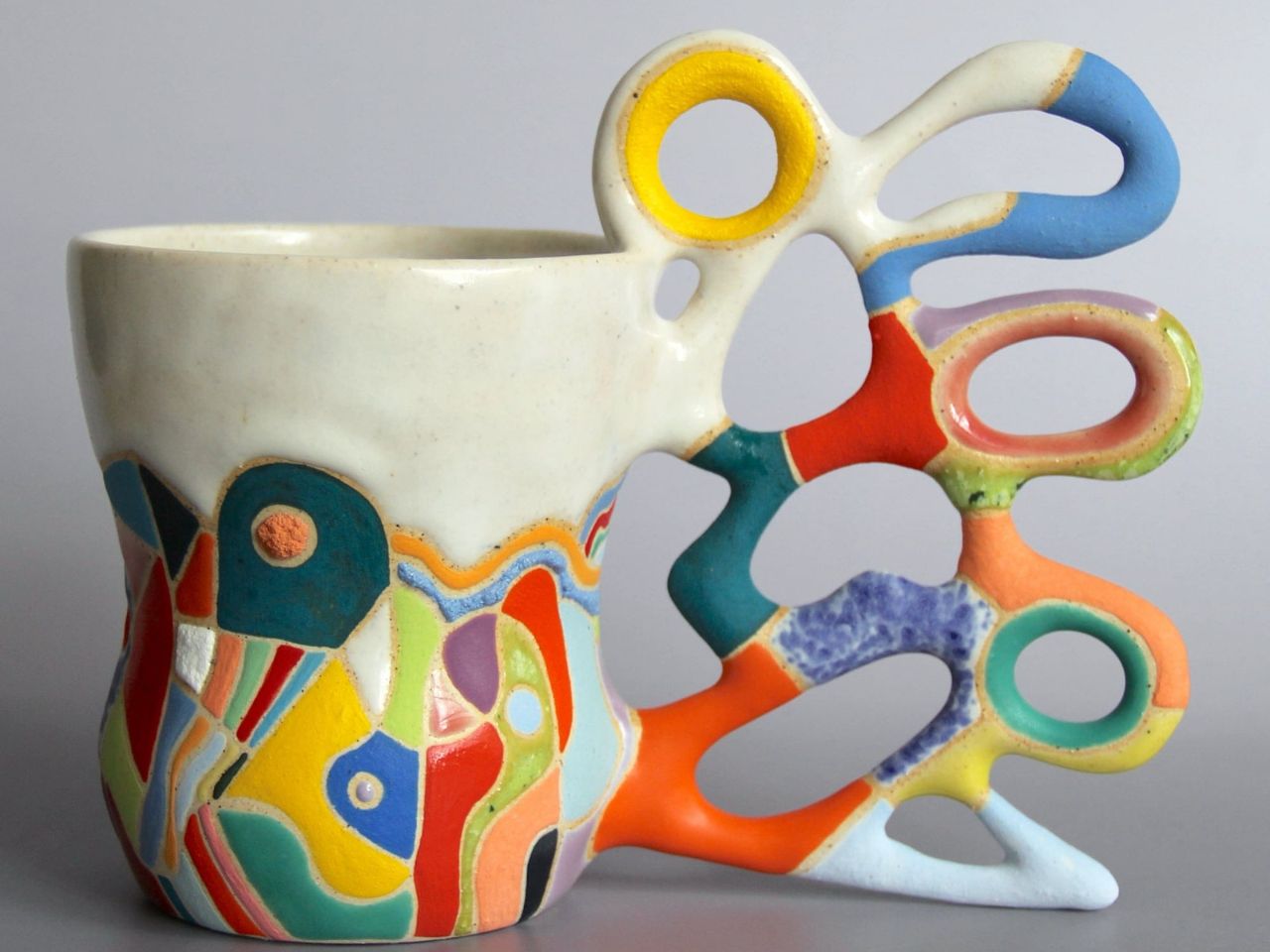
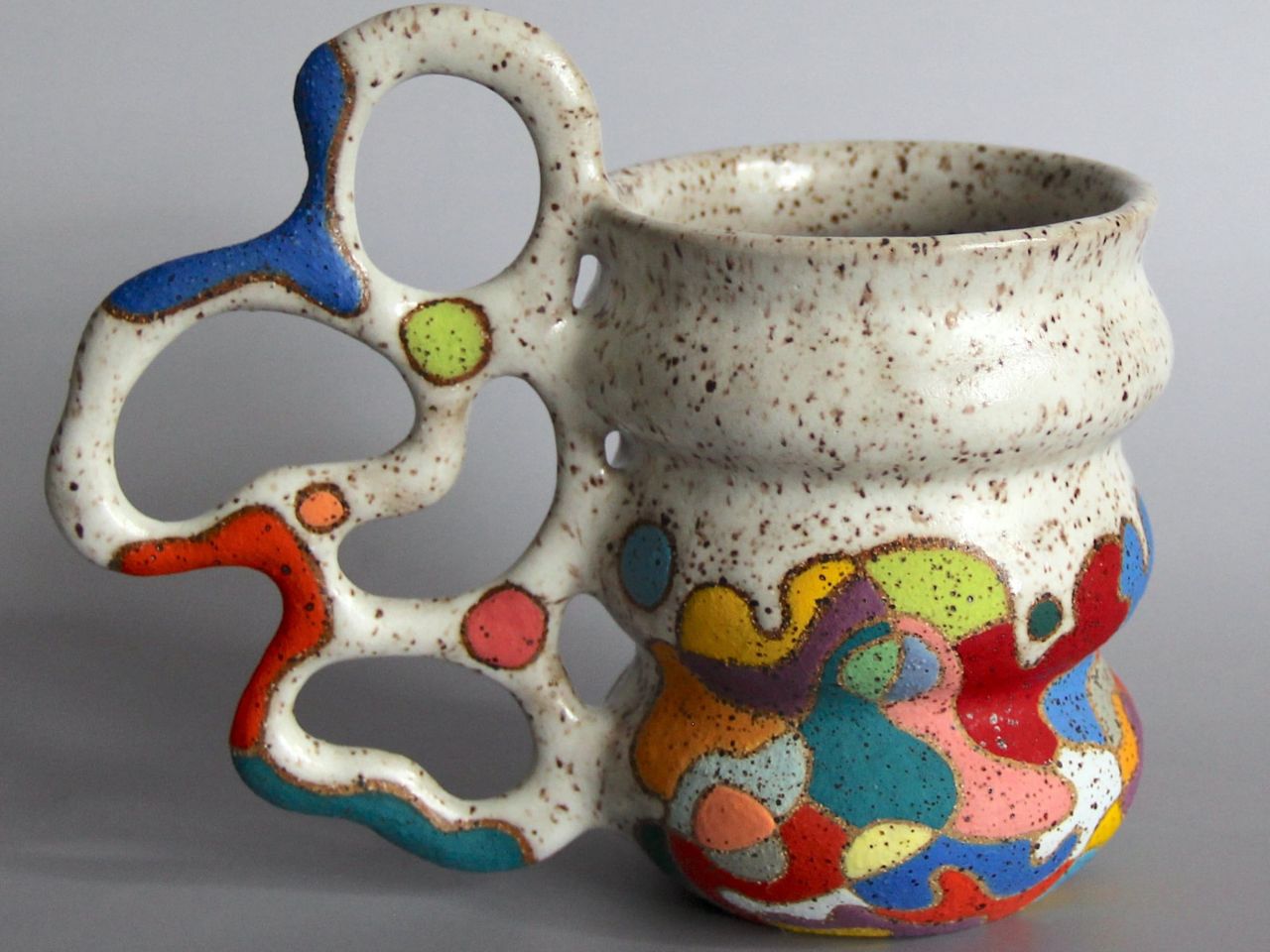
Once the vessel takes shape on the wheel, Thompson-Lee shifts to the meticulous hand-building phase. With an exacto knife, she carves handles from thick slabs of clay, carefully refining the form until it’s just right. After smoothing the edges with a damp sponge, the handle is attached to the mug, which then undergoes its first firing. But the journey doesn’t end there. Layers of intricate patterns and vibrant glazes are added post-firing, transforming the piece into a vivid, abstract work of art.
Thompson-Lee’s creative exploration doesn’t stop at mugs and vases. She’s pushing her biomorphic designs into new territories, with plans for jars, lamps, and even small furniture. Committed to sustainability, she’s also experimenting with recycled paper pulp as a medium. Her unique, tactile creations are available on Etsy, where each piece offers an adventure waiting to be discovered.
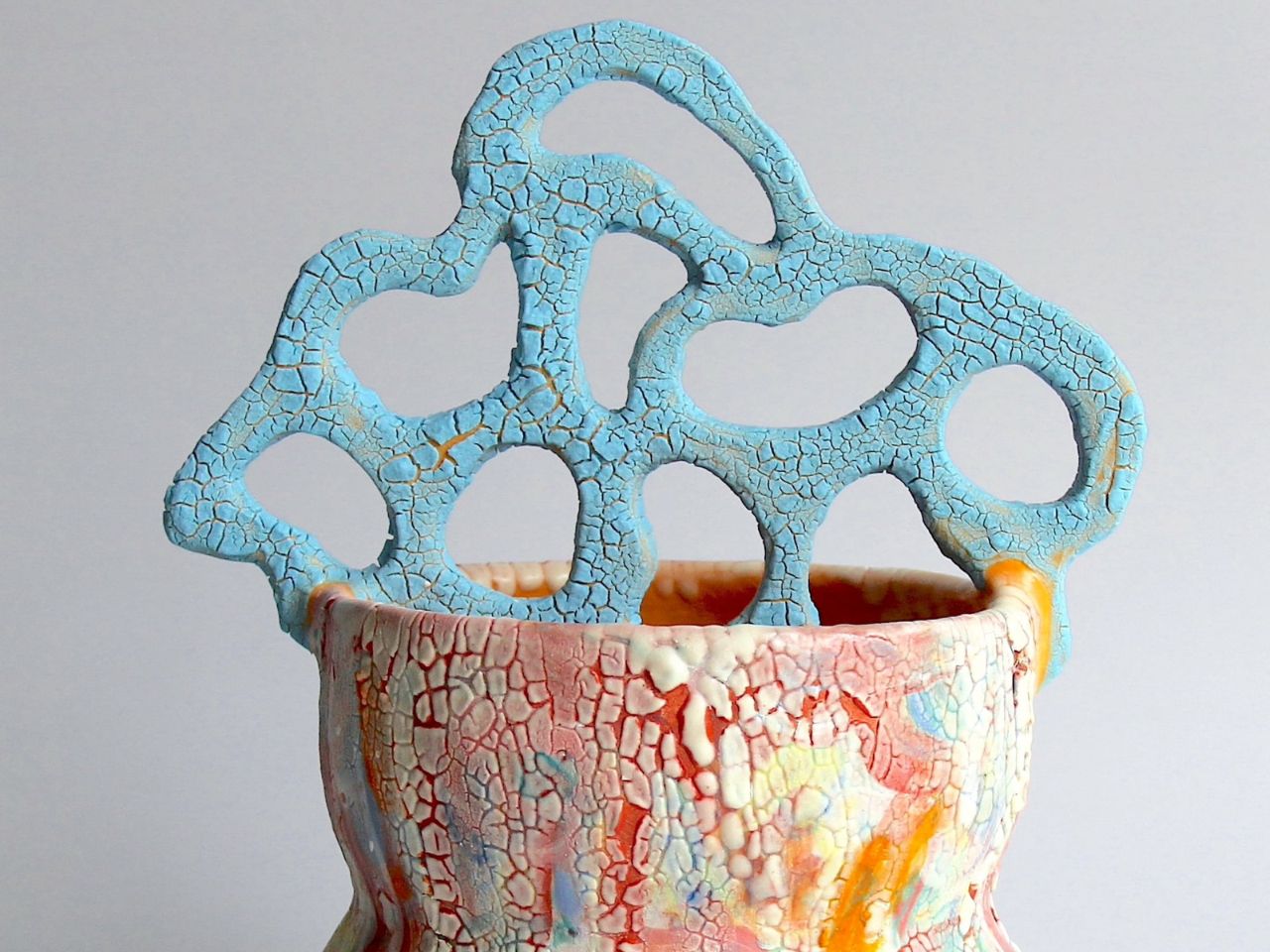
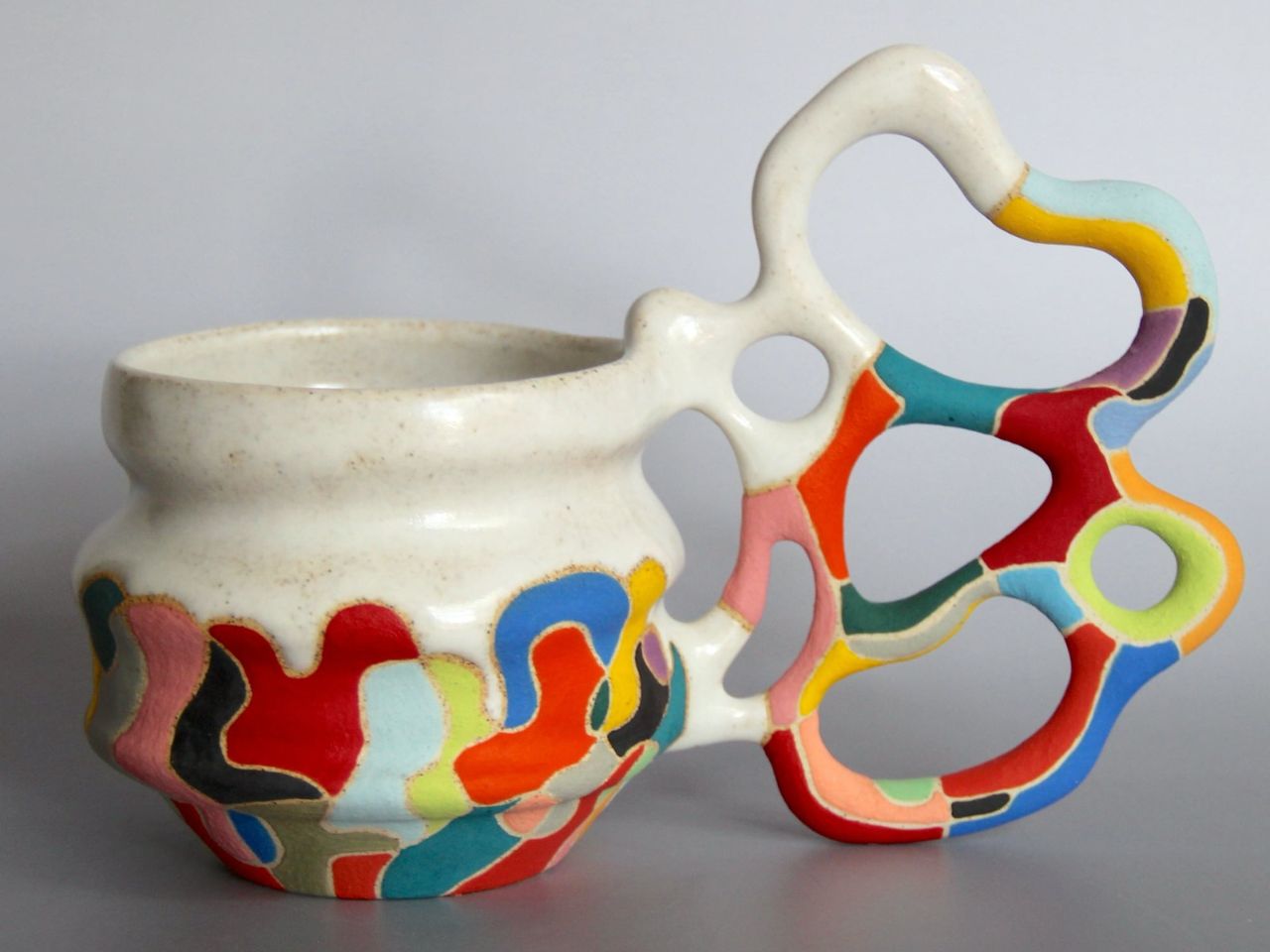
The post Biomorphic handles on these ceramic mugs add a touch of nature and quirk to lifestyle design first appeared on Yanko Design.
